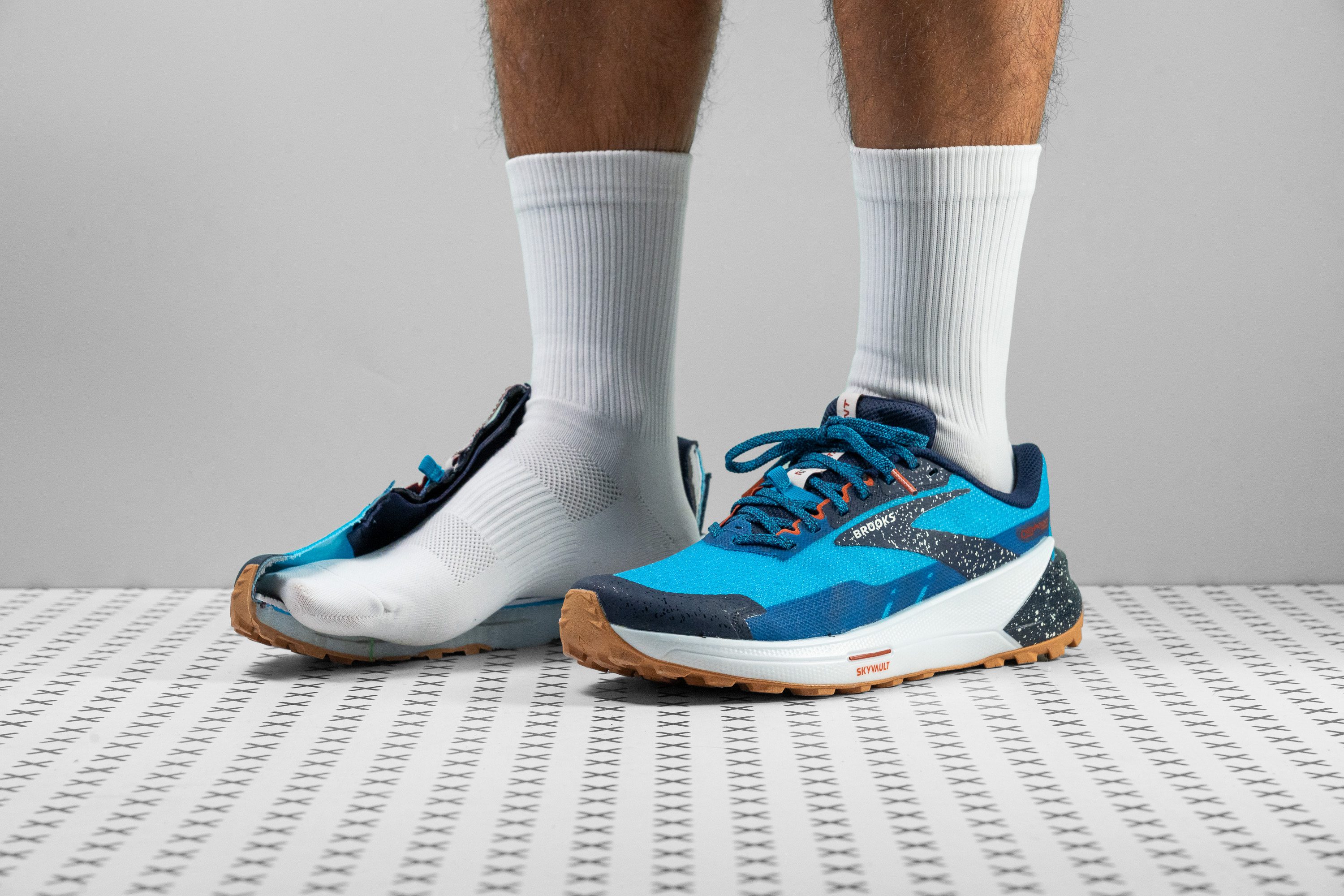Our verdict
- Top pick in best Brooks trail running shoes (2023)
Pros
- Impressively lightweight design
- Offers a stable ride
- Excellent traction on easy trails
- Ideal for midfoot and forefoot strikers
- The SkyVault plate provides both protection and bounce
- Durable, long-lasting outsole
- Perfect for faster paces
Cons
- The upper might be too narrow for many runners
- Lacks sufficient cushioning for longer distances
- Not for technical terrain
Audience verdict
- Top 30% in running shoes for hiking
Comparison
The most similar running shoes compared
+ + Add a shoe | |||||
|---|---|---|---|---|---|
| Audience score | 87 Great! | 89 Great! | 90 Great! | 92 Superb! | |
| Price | $170 | $170 | $150 | $150 | |
| Trail terrain | LightModerate | LightModerate | LightModerate | ModerateTechnical | |
| Arch support | Neutral | Neutral | Neutral | Neutral | |
| Weight lab Weight brand | 9.7 oz / 275g 9.7 oz / 275g | 9 oz / 255g 9.4 oz / 266g | 10.9 oz / 308g 10.6 oz / 300g | 9.9 oz / 282g 9.7 oz / 275g | |
| Drop lab Drop brand | 6.4 mm 6.0 mm | 6.8 mm 6.0 mm | 4.8 mm 5.0 mm | 9.0 mm 8.0 mm | |
| Strike pattern | Mid/forefoot | Mid/forefoot | Mid/forefoot | HeelMid/forefoot | |
| Size | True to size | True to size | Slightly small | True to size | |
| Midsole softness | Balanced | Balanced | Balanced | Balanced | |
| Difference in midsole softness in cold | Small | Normal | Small | Small | |
| Plate | Rock plate | Rock plate | Rock plate | ✗ | |
| Toebox durability | Bad | Very bad | Bad | Good | |
| Heel padding durability | Good | Good | Good | Good | |
| Outsole durability | Good | Decent | Good | Decent | |
| Breathability | Moderate | Warm | Moderate | Moderate | |
| Width / fit | Narrow | Narrow | Wide | Medium | |
| Toebox width | Medium | Wide | Wide | Medium | |
| Stiffness | Moderate | Moderate | Moderate | Flexible | |
| Difference in stiffness in cold | Small | Small | Normal | Small | |
| Torsional rigidity | Stiff | Moderate | Stiff | Moderate | |
| Heel counter stiffness | Moderate | Flexible | Moderate | Stiff | |
| Lug depth | 3.0 mm | 2.9 mm | 4.1 mm | 4.0 mm | |
| Heel stack lab Heel stack brand | 29.0 mm 29.0 mm | 28.3 mm 30.0 mm | 30.8 mm 30.0 mm | 33.5 mm 33.0 mm | |
| Forefoot lab Forefoot brand | 22.6 mm 23.0 mm | 21.5 mm 24.0 mm | 26.0 mm 25.0 mm | 24.5 mm 25.0 mm | |
| Widths available | Normal | Normal | NormalWide | Normal | |
| Season | All seasons | All seasons | All seasons | All seasons | |
| Removable insole | ✓ | ✓ | ✓ | ✓ | |
| Orthotic friendly | ✓ | ✓ | ✓ | ✓ | |
| Waterproofing | Water repellent | - | Water repellent | Water repellent | |
| Ranking | #301 Bottom 48% | #68 Top 21% | #37 Top 11% | #13 Top 4% | |
| Popularity | #374 Bottom 36% | #195 Bottom 42% | #205 Bottom 39% | #204 Bottom 39% |
Who should buy
We recommend the Brooks Catamount 2 for:
- Enthusiasts of Brooks road running shoes looking for a trail running equivalent.
- Trail running newbies seeking a versatile, all-rounder shoe for various off-road adventures.
- Neutral trail runners in pursuit of a lightweight, stable shoe ideal for easy terrain.
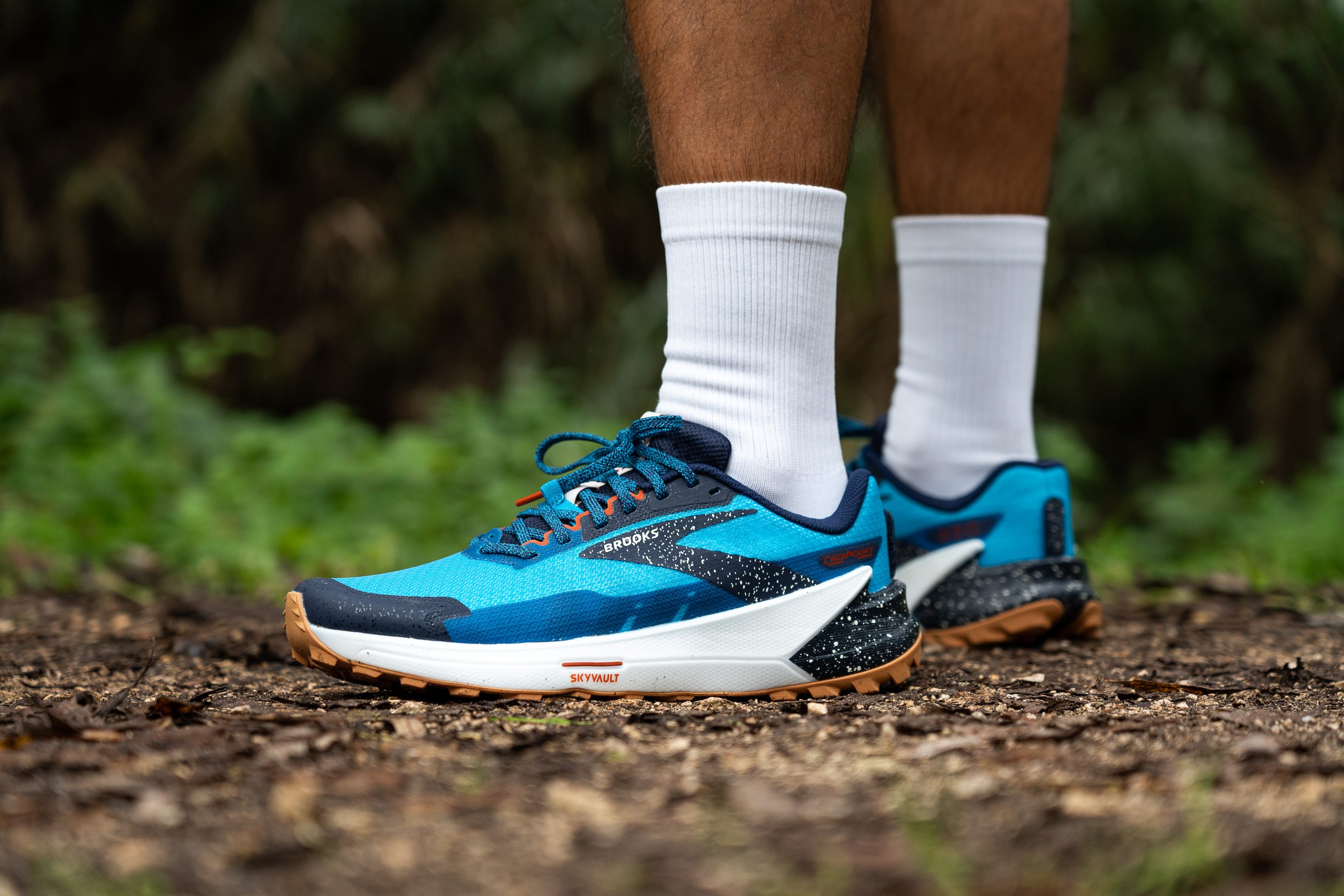
Who should NOT buy
Brooks crafted the Catamount 2 primarily for narrow-to-medium width feet, making it a less suitable choice for runners with wide feet. Plus, since it's a trail shoe, a bit more room for toe splay is usually desirable, so we think it might not be the best pick for those runners.
If you fall into that category, we suggest considering shoes with wider toeboxes and similar features, such as the Saucony Peregrine 13 or the Nike Pegasus Trail 4.
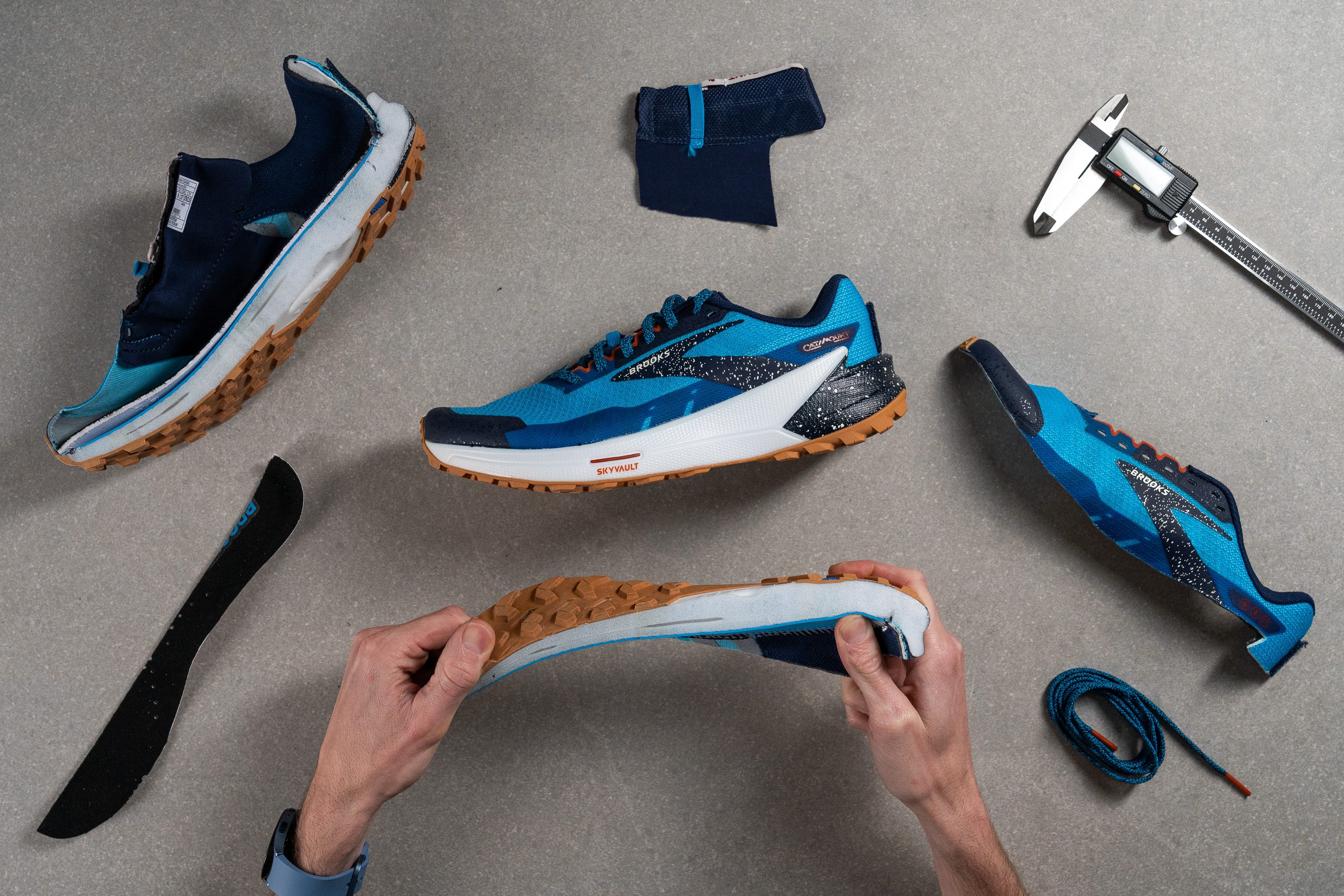
Furthermore, it's not the top choice for long-distance trail running due to its limited cushioning. If you're deep into the ultra-world, you might want to explore options like the Hoka Mafate Speed 4 or the Saucony Endorphin Edge.
Cushioning
Heel stack
One reason Brooks managed to keep this shoe relatively light compared to the competition is its low stack height.
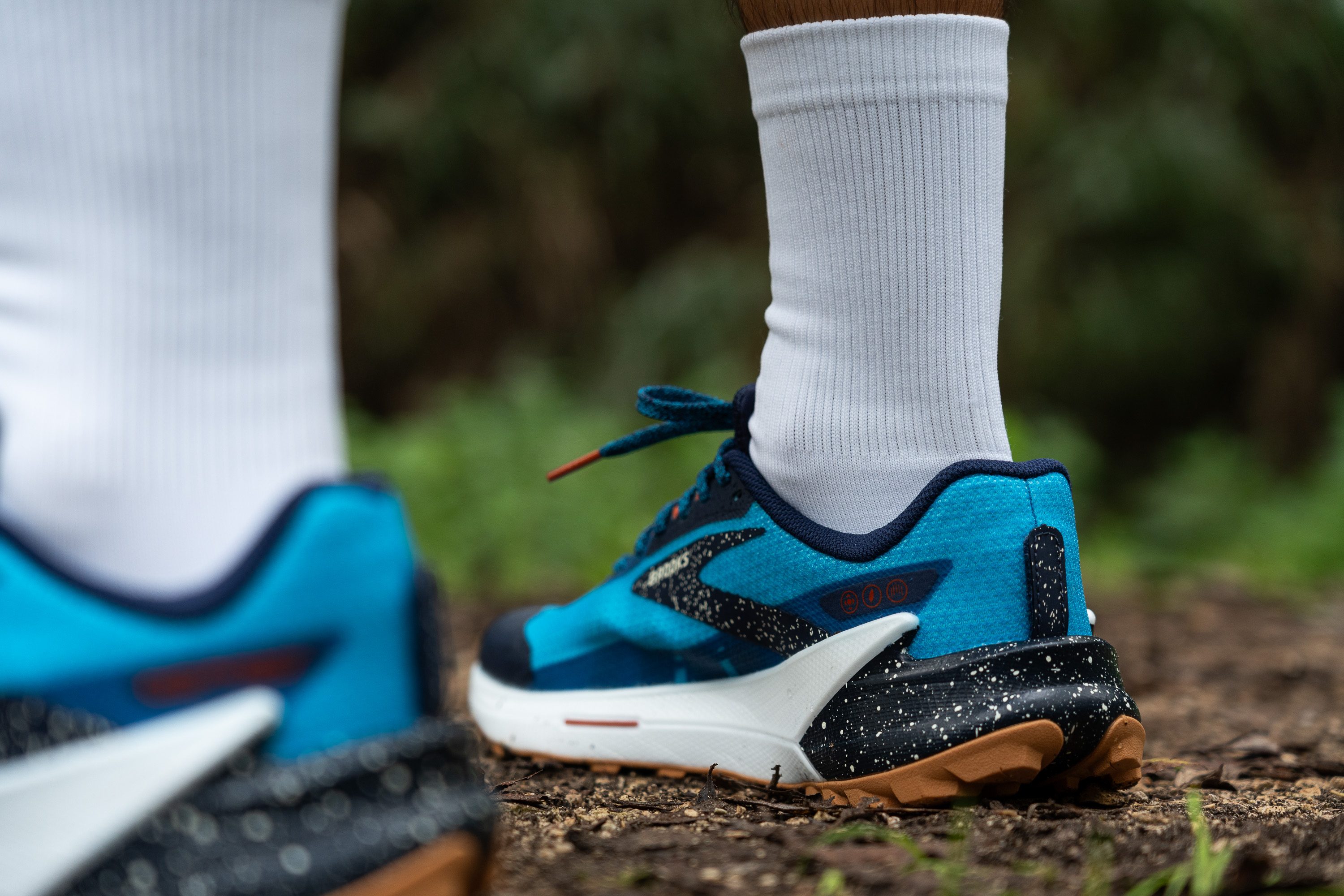
With a heel height of 29.0 mm, it positions itself as a shoe suitable for short to medium distances, but not as the ideal choice for longer efforts.
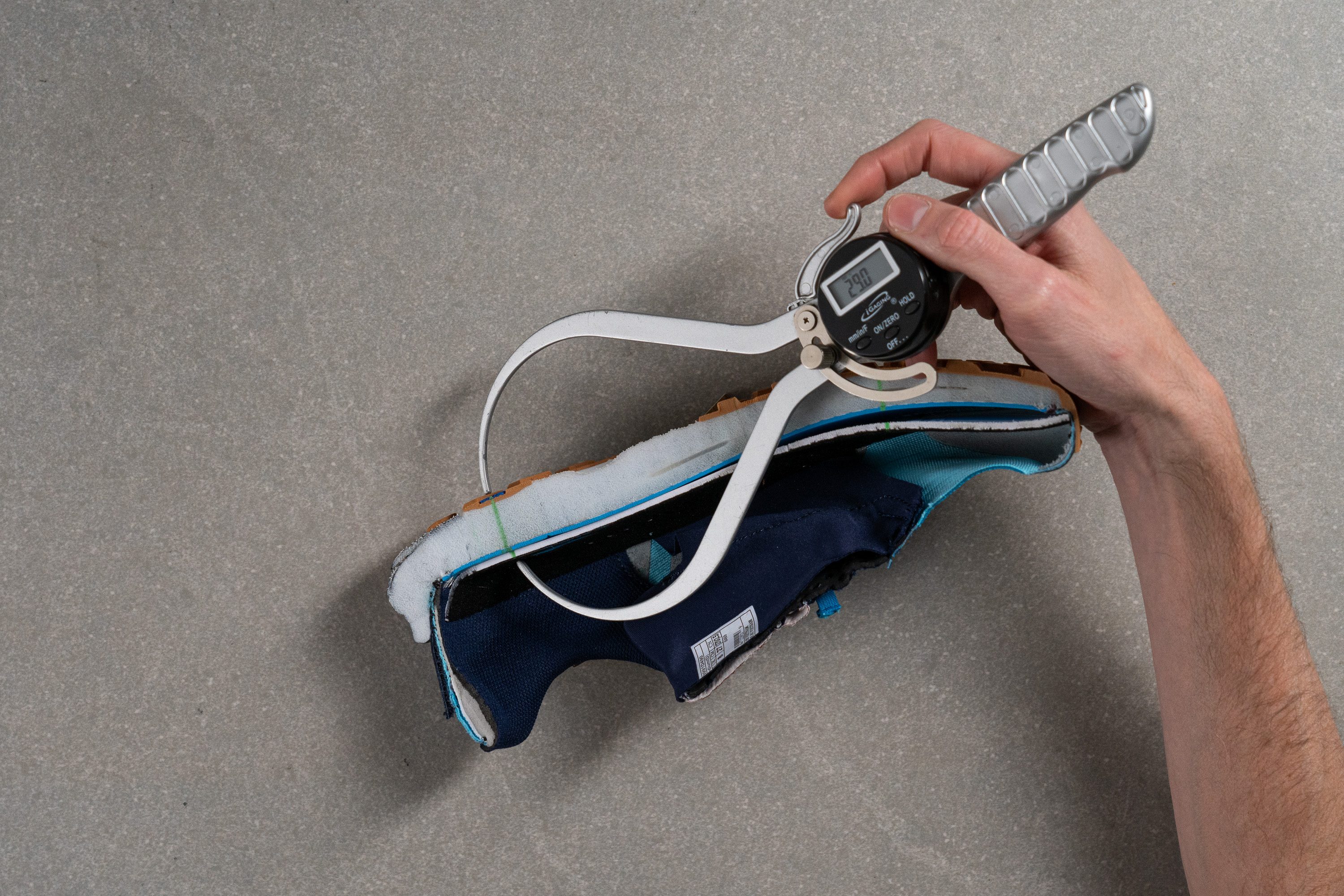
| Catamount 2 | 29.0 mm |
| Average | 32.0 mm |
Forefoot stack
The forefoot follows the same pattern as the heel, with a slightly lower stack than what's typical in trail shoes. This design again signals to every midfoot and forefoot striker that this shoe is best suited for runs lasting 1 to 2 hours.
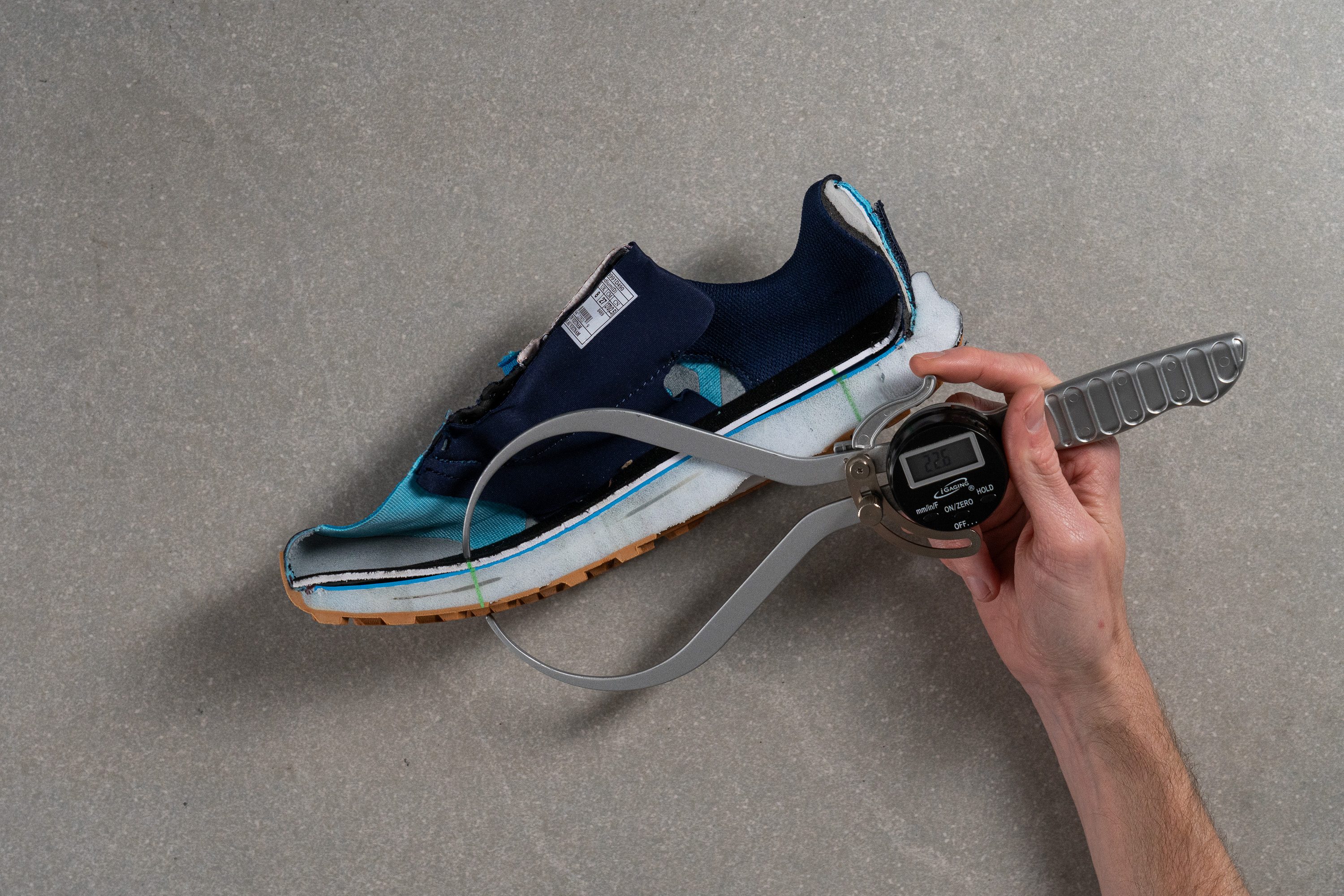
| Catamount 2 | 22.6 mm |
| Average | 24.5 mm |
Drop
Brooks officially stated a 6-mm heel-to-toe drop for the Catamount 2, and following the official guidelines, we measured it at 6.4 mm—a negligible difference.
This design makes the shoe more suitable for midfoot strikers, although a 6.4 mm drop is often considered a "universal" drop that can also provide a satisfactory ride for both forefoot and heel strikers.
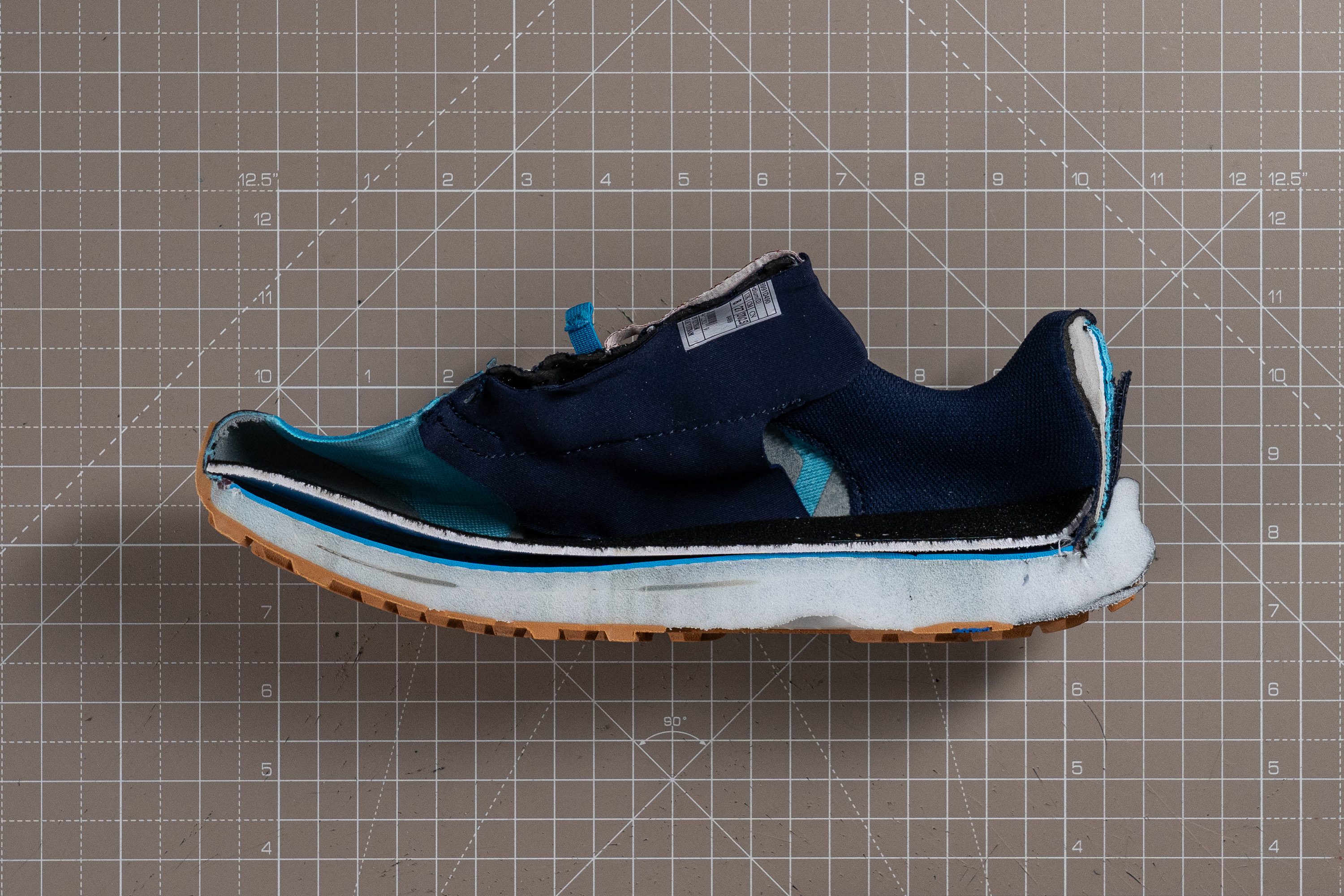
| Catamount 2 | 6.4 mm |
| Average | 7.6 mm |
Midsole softness
Transitioning to the midsole, we discovered a full-length slab of Brooks' DNA Flash. As extensively detailed in our guide on foams, DNA Flash is an EVA-based, nitrogen-infused foam famous for its lightness and speed-enhancing qualities. It's the same compound found in the fantastic Brooks Hyperion Max.
With a softness rating of 22.0 HA, we found it strikes a perfect balance, making it exceptionally well-suited for a trail running shoe.
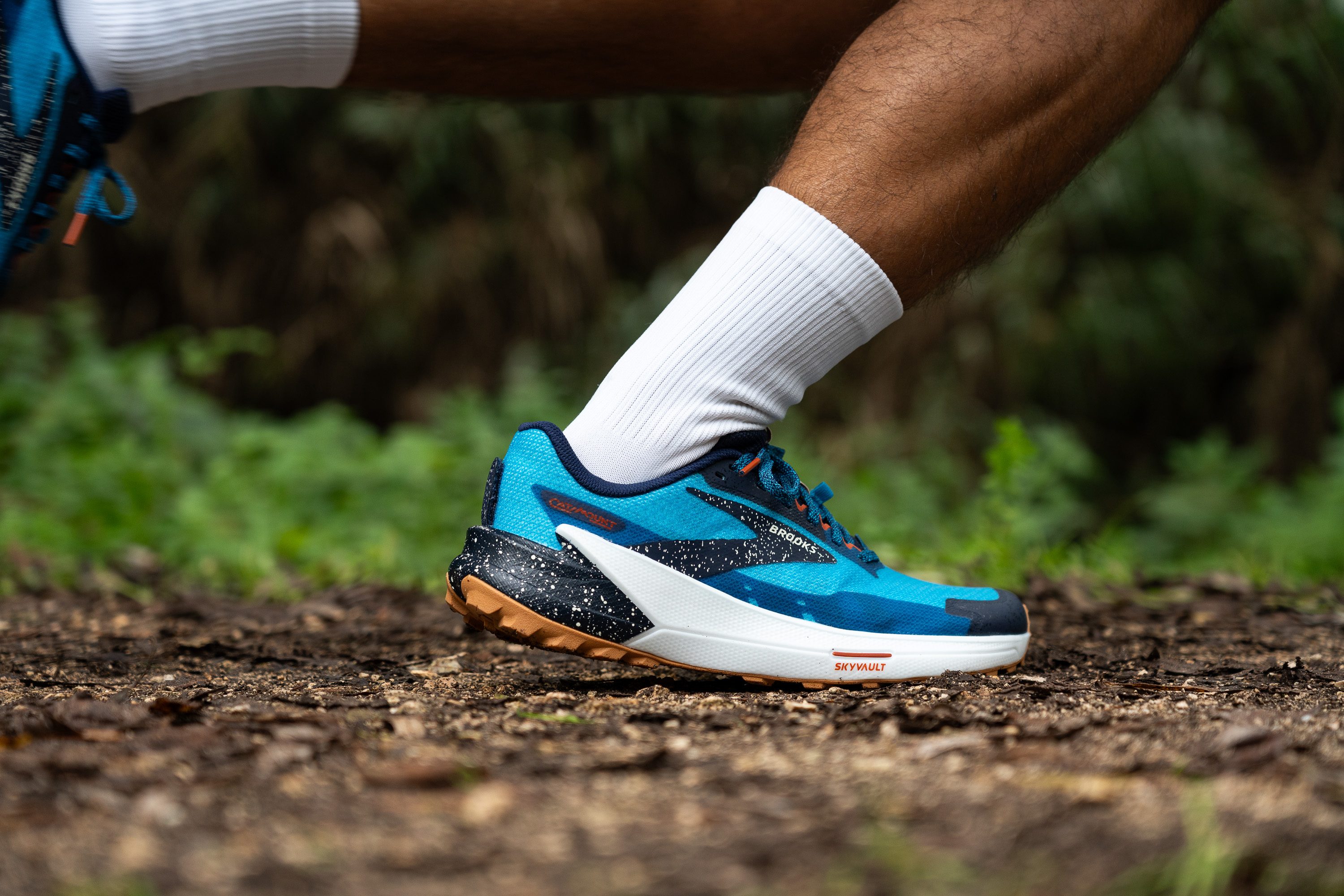
Keep in mind that the ride might feel a bit firmer than expected due to the Pebax plate in the midsole. This feature not only offers stability and added protection but also doubles as a rock plate.
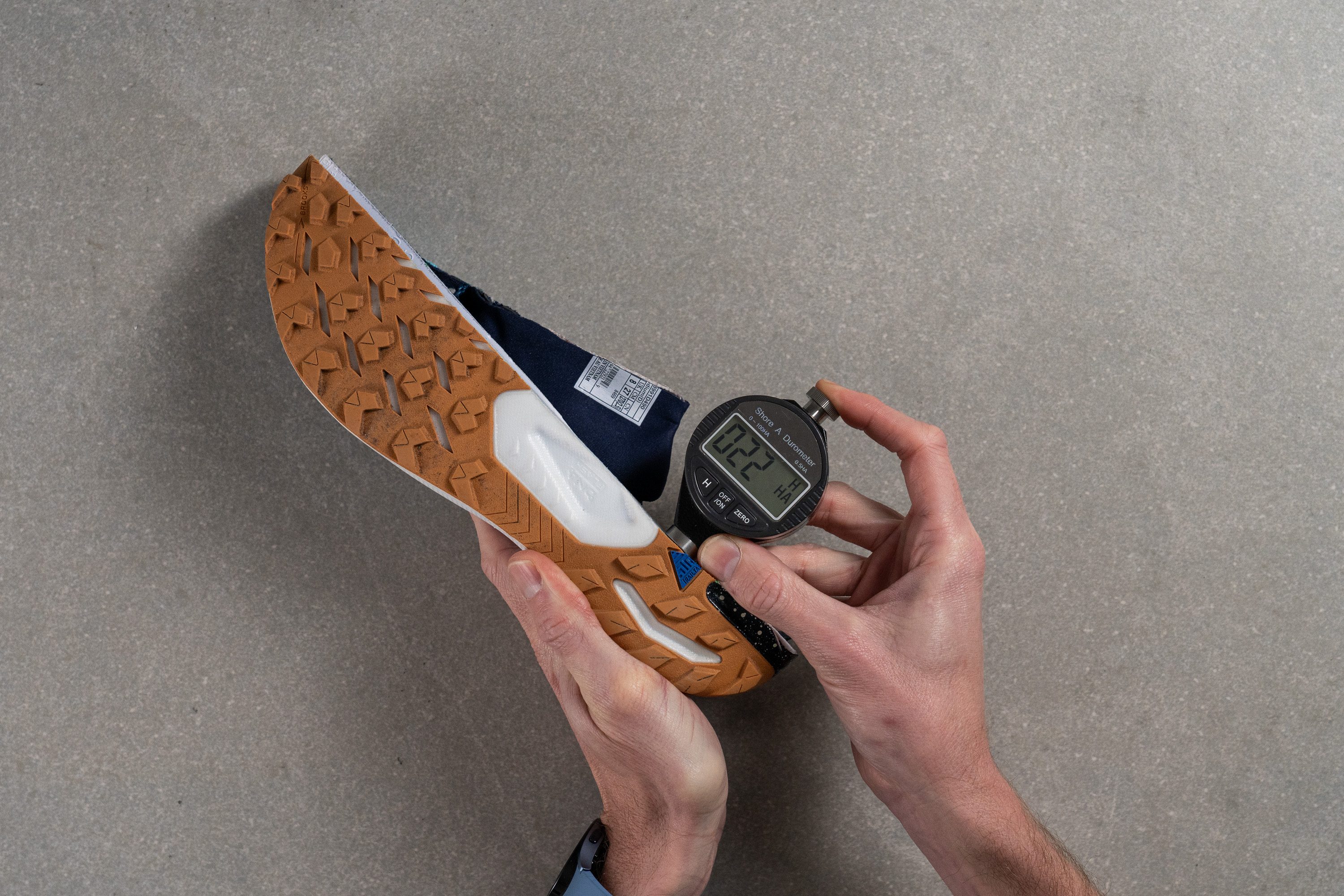
| Catamount 2 | 22.0 HA |
| Average | 22.3 HA |
Size and fit
Size
Brooks Catamount 2 fits true to size (22 votes).
Width / Fit
From the moment we slipped our feet into the shoe, we felt it was pretty narrow, and our toebox measurements further confirmed this.
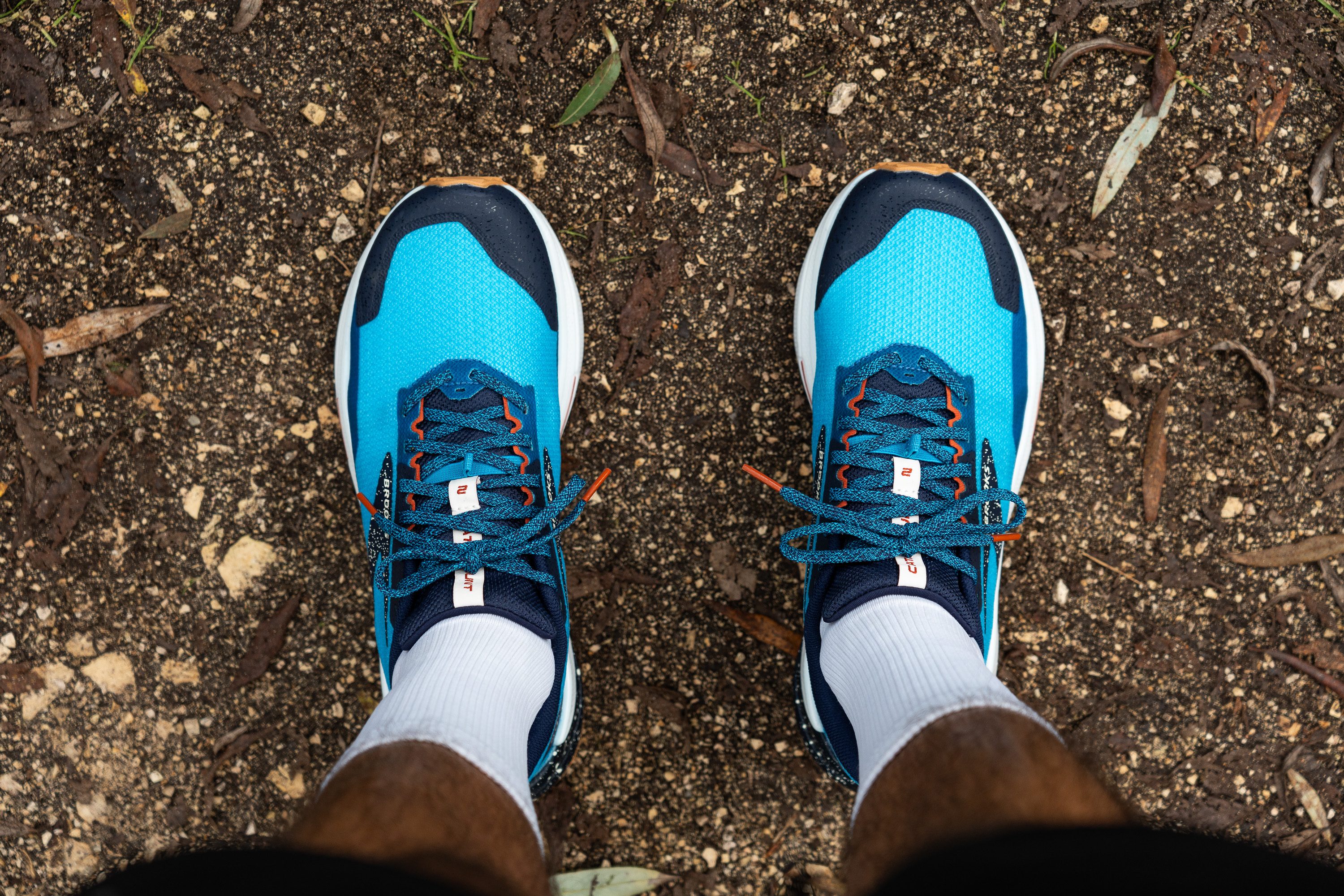
Measuring 95.7 mm at its widest part, you can expect a race-oriented fit for normal feet, and an excellent fit for those with narrow feet. This feature is a side benefit for technical terrain, although it's clear that the shoe isn't primarily designed for challenging trails.
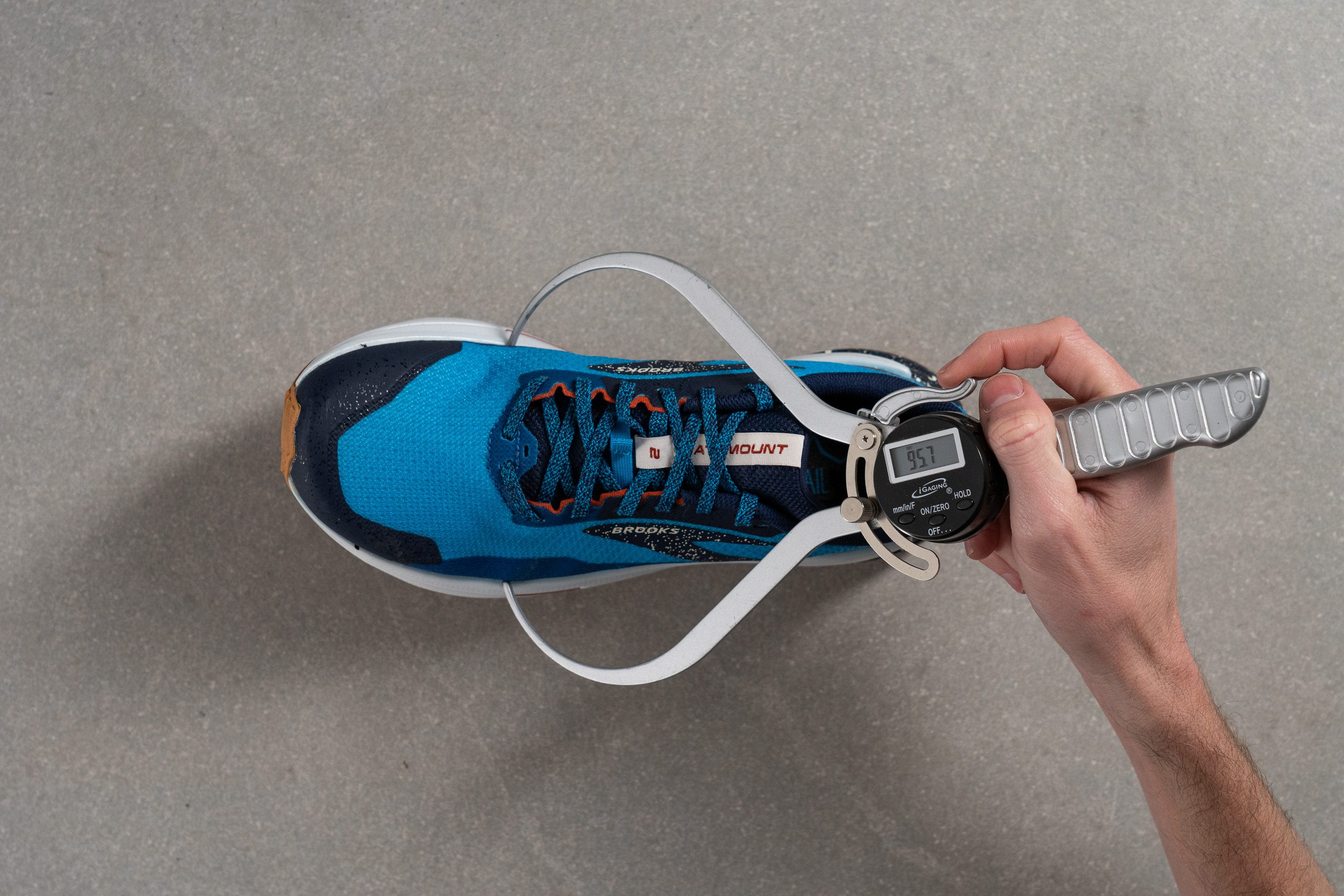
This shoe follows methodology 1.7. It has been replaced with methodology 1.8 (the 'gel test') on more recently updated shoes. Results from the two methodologies cannot be directly compared, which is why you don't see recently tested shoes in the chart below.
| Catamount 2 | 95.7 mm |
| Average | 99.0 mm |
Toebox width
However, there's a catch. For those with wide feet only in the toe region, this shoe can be accommodating, as it features a very low taper in the toe cap. We measured 79.2 mm in that area.
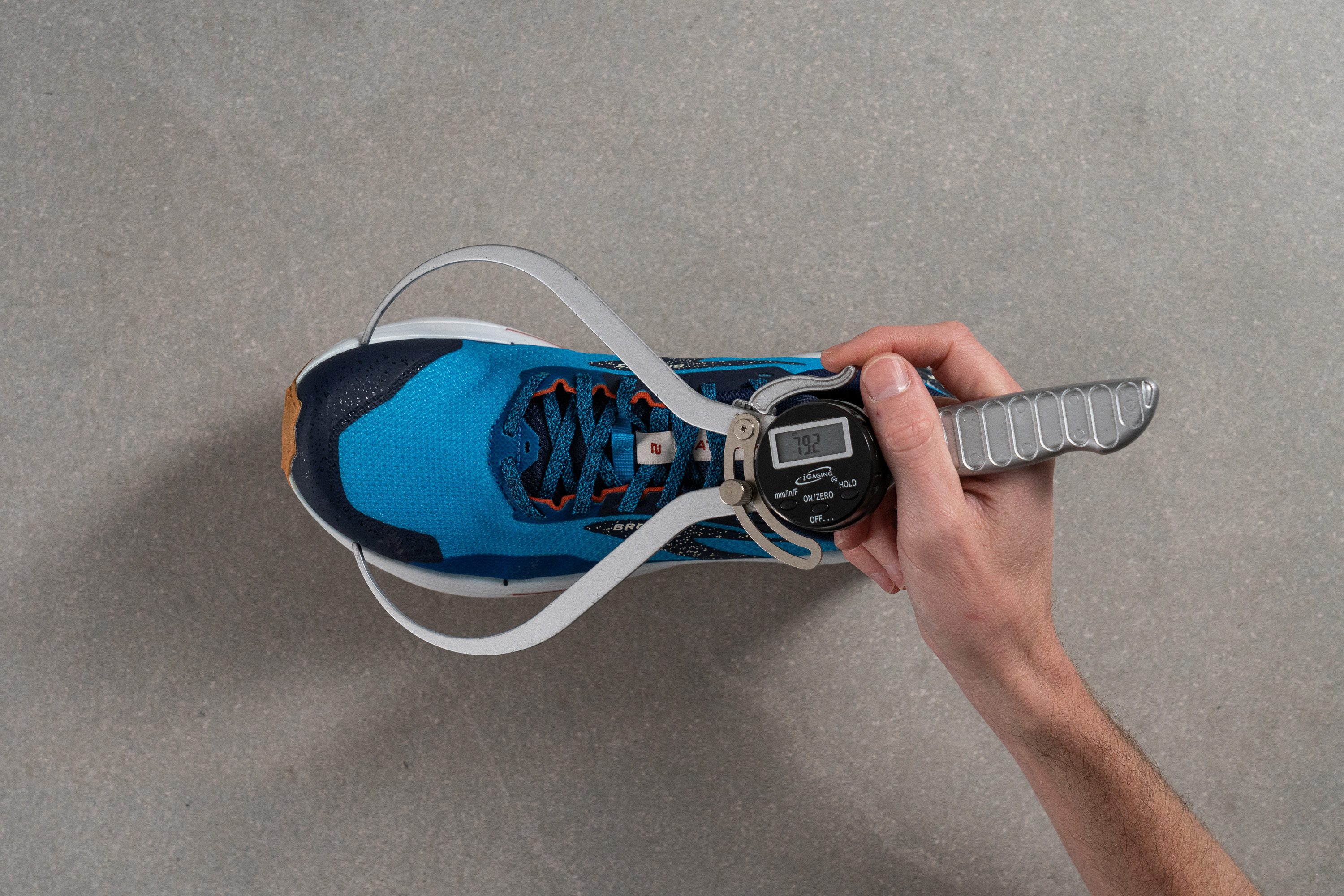
This shoe follows methodology 1.7. It has been replaced with methodology 1.8 (the 'gel test') on more recently updated shoes. Results from the two methodologies cannot be directly compared, which is why you don't see recently tested shoes in the chart below.
| Catamount 2 | 79.2 mm |
| Average | 79.4 mm |
Traction / Grip
Lug depth
We mentioned earlier that we viewed the shoe, based on its stiffness, as better suited for easy trails. Now, this is 100% confirmed after measuring the lugs at 3.0-mm long.

In fact, we see the Catamount 2 as being on the verge of a road-to-trail shoe.

| Catamount 2 | 3.0 mm |
| Average | 3.5 mm |
Flexibility / Stiffness
We've already discussed the shoe's torsional rigidity, but what about its flexibility lengthwise? If it's too rigid, it could be uncomfortable for easy runs or even walking!
Luckily, in our 90-degree bend test, it scored just 29.1N, which is average.
This shoe follows methodology 1.7. It has been replaced with methodology 1.8 (the 'gel test') on more recently updated shoes. Results from the two methodologies cannot be directly compared, which is why you don't see recently tested shoes in the chart below.
| Catamount 2 | 29.1N |
| Average | 27.2N |
Stiffness in cold
We then repeated the test, like we did with the midsole softness, to see if the shoe becomes super stiff after a 20-minute stint in our freezer. The new reading came in at 33.1N.
| Catamount 2 | 33.1N |
| Average | 36.0N |
Stiffness in cold (%)
This is just a 13.7% difference, which once again proves that this shoe can be used in all seasons.
| Catamount 2 | 14% |
| Average | 32% |
Weight
The scale displayed a feather-light 9.7 oz (275g) on the screen, a delightful find for those seeking a lightweight trail running shoe.
It's not just lighter than the average trail shoe—it also impressively dips below the 10-oz benchmark.
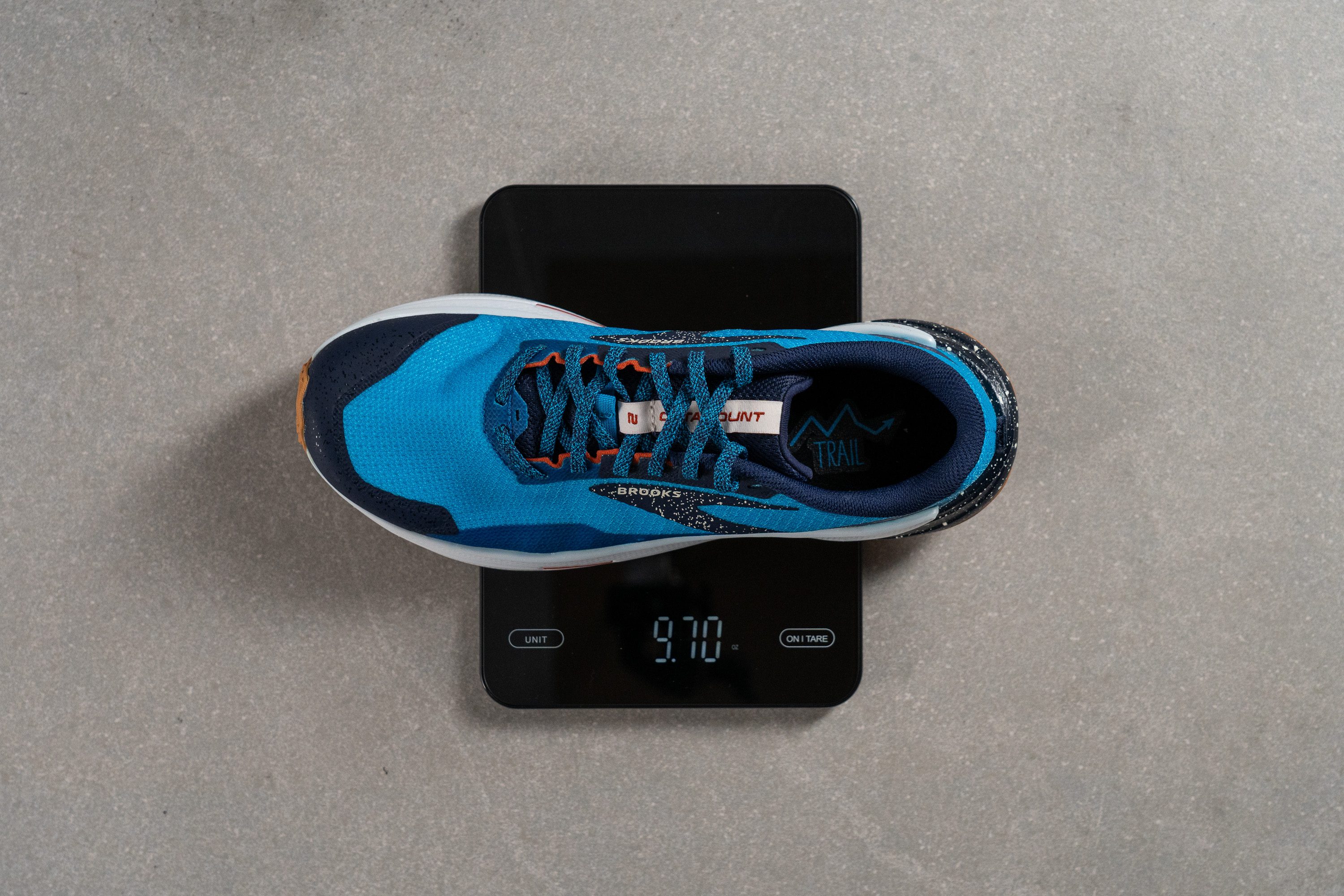
| Catamount 2 | 9.7 oz (275g) |
| Average | 10.2 oz (290g) |
Breathability
Trail running shoes take a different approach to breathability compared to road running shoes because more isn't always better. In fact, in very cold countries, we might prefer shoes with less breathability, especially for winter runs.
That's why we believe a 3/5 rating is a nice balance for these shoes, which is exactly what the Catamount 2 scored after our smoke test.
Under the light, we spotted a very thin mesh, strategically reinforced on the sides to enhance stability. This design reduces breathability, which explains why there's so much airflow through the tongue.
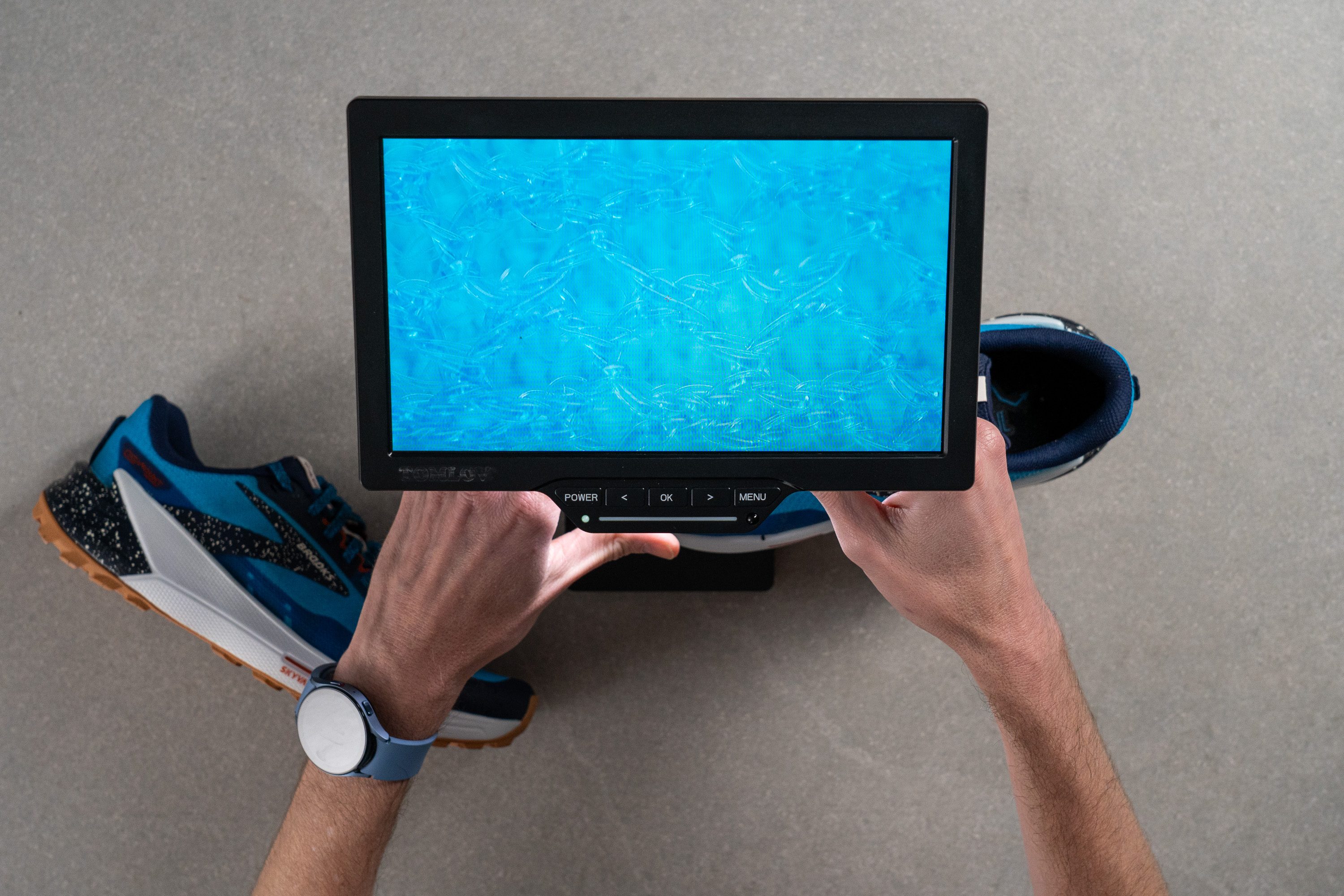
To better understand the upper, we examined it under a microscope.
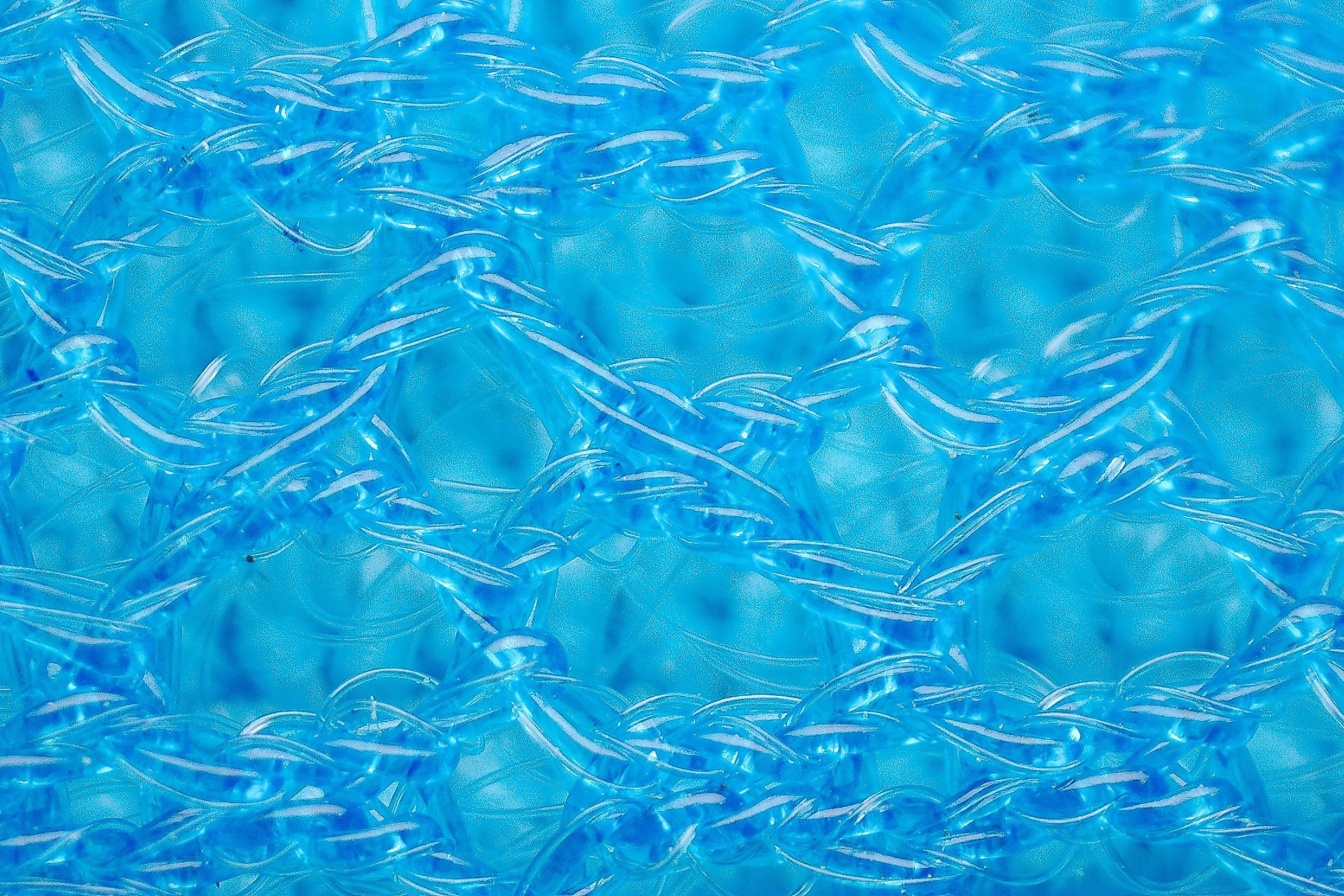
We found an interesting engineered mesh with a thin outer layer for structure—unlike most shoes, which have this layer inside.
Lastly, we analyzed how Brooks structured the upper. Essentially, it's a road design but with additional layers for extra comfort and protection in certain areas.
| Catamount 2 | 3 |
| Average | 3.2 |
Stability
Lateral stability test
The Catamount 2 is a neutral shoe, but it has a few tricks up its sleeve, such as the large DNA Flash walls on the medial and lateral sides, and the SkyVault plate.
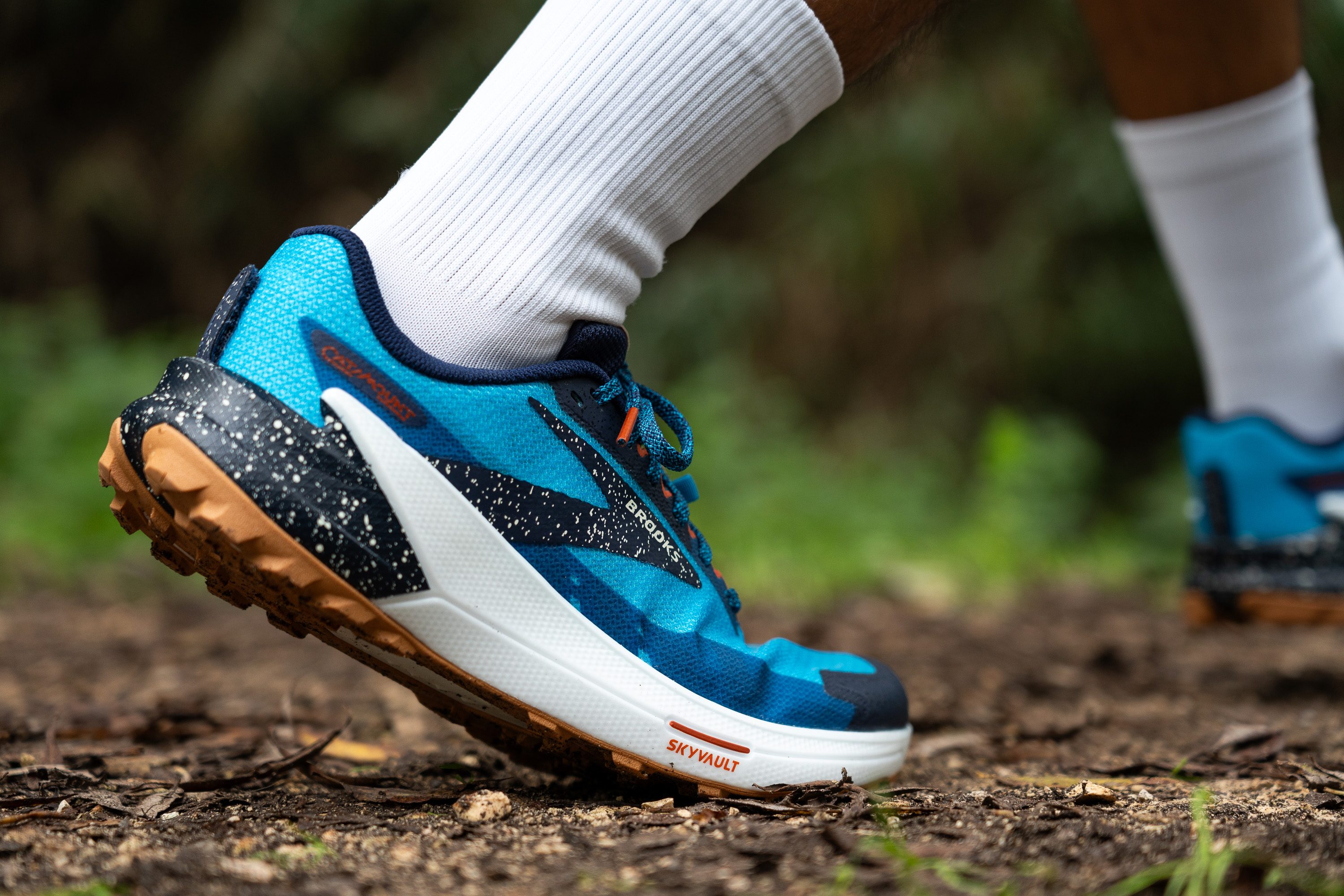
While we believe it's best suited for neutral runners, those with mild stability needs can also use this shoe without any issues.
Torsional rigidity
Obviously, the lower stack height contributes to a stable ride. However, a significant part of this stability comes from the shoe's impressive torsional rigidity that we rated at 5/5.
This feature keeps the shoe really stable. But naturally, it results in less agility on technical terrain, making the Catamount 2 a shoe geared towards easy trails.
| Catamount 2 | 5 |
| Average | 3.6 |
Heel counter stiffness
The heel counter takes a more balanced approach, earning a 3/5. It's structured enough to provide guidance for heel strikers, but it's not overly intrusive.
| Catamount 2 | 3 |
| Average | 3.1 |
Midsole width - forefoot
One of the key reasons the Catamount 2 offers such a stable ride is its impressive midsole width.
At 116.3 mm, it's remarkably wide, greatly benefiting those with a midfoot or forefoot striking technique.

| Catamount 2 | 116.3 mm |
| Average | 112.4 mm |
Midsole width - heel
On the other hand, the heel width is just average, measuring 90.2 mm. This isn't bad news for heel strikers, but don't expect the same dimensions as you would find in a stability shoe.
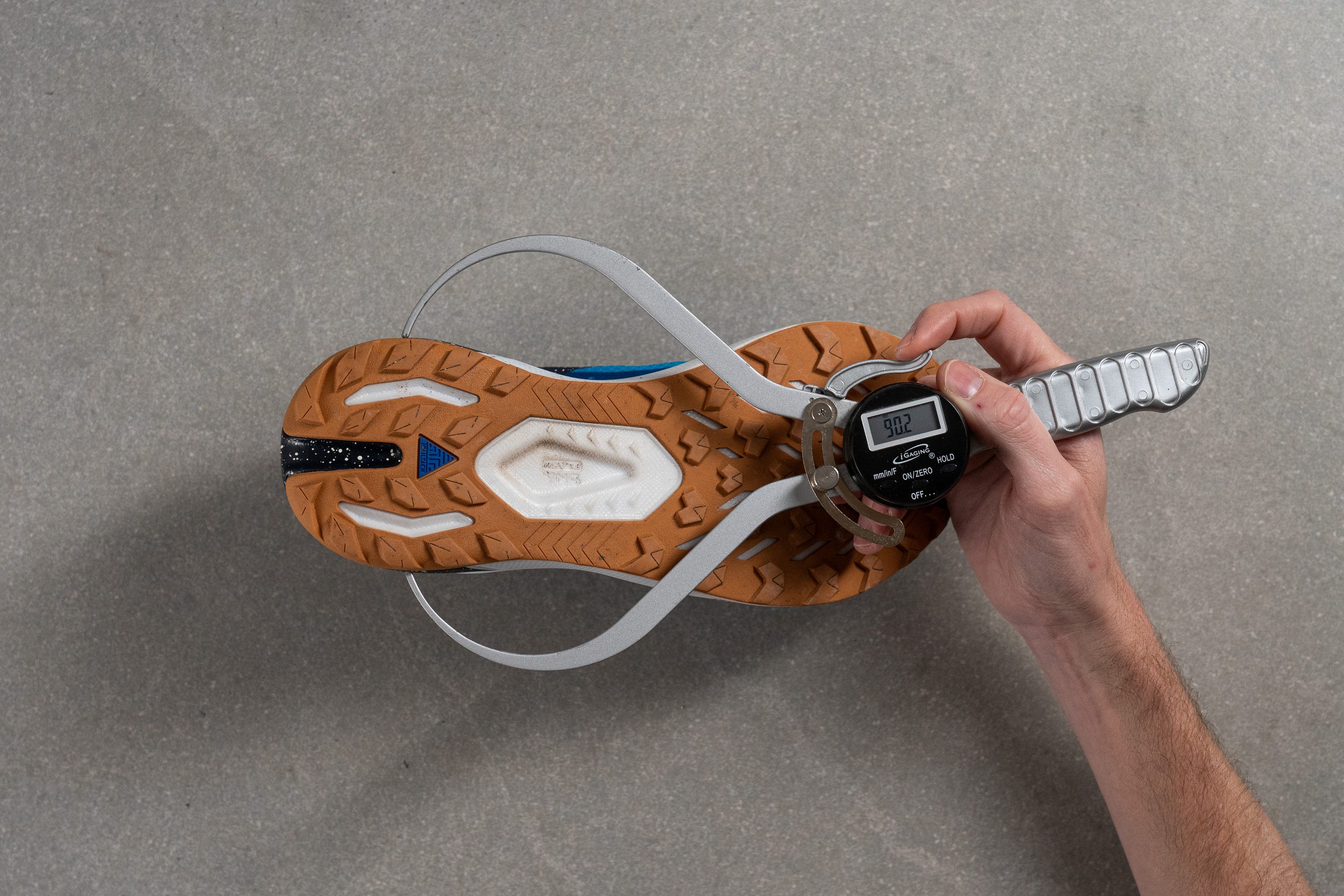
| Catamount 2 | 90.2 mm |
| Average | 89.5 mm |
Durability
Toebox durability
The upside of a thin, minimalistic mesh is it keeps the shoe lightweight and offers decent breathability. However, the major downside is the likely impact on durability.
During our first Dremel test in this lab review, the Catamount 2 only managed a 2/5. While it's not the absolute worst, it's far from impressive. However, Brooks has incorporated some robust protective features on the toe cap, effectively shielding the upper against a significant amount of potential damage.
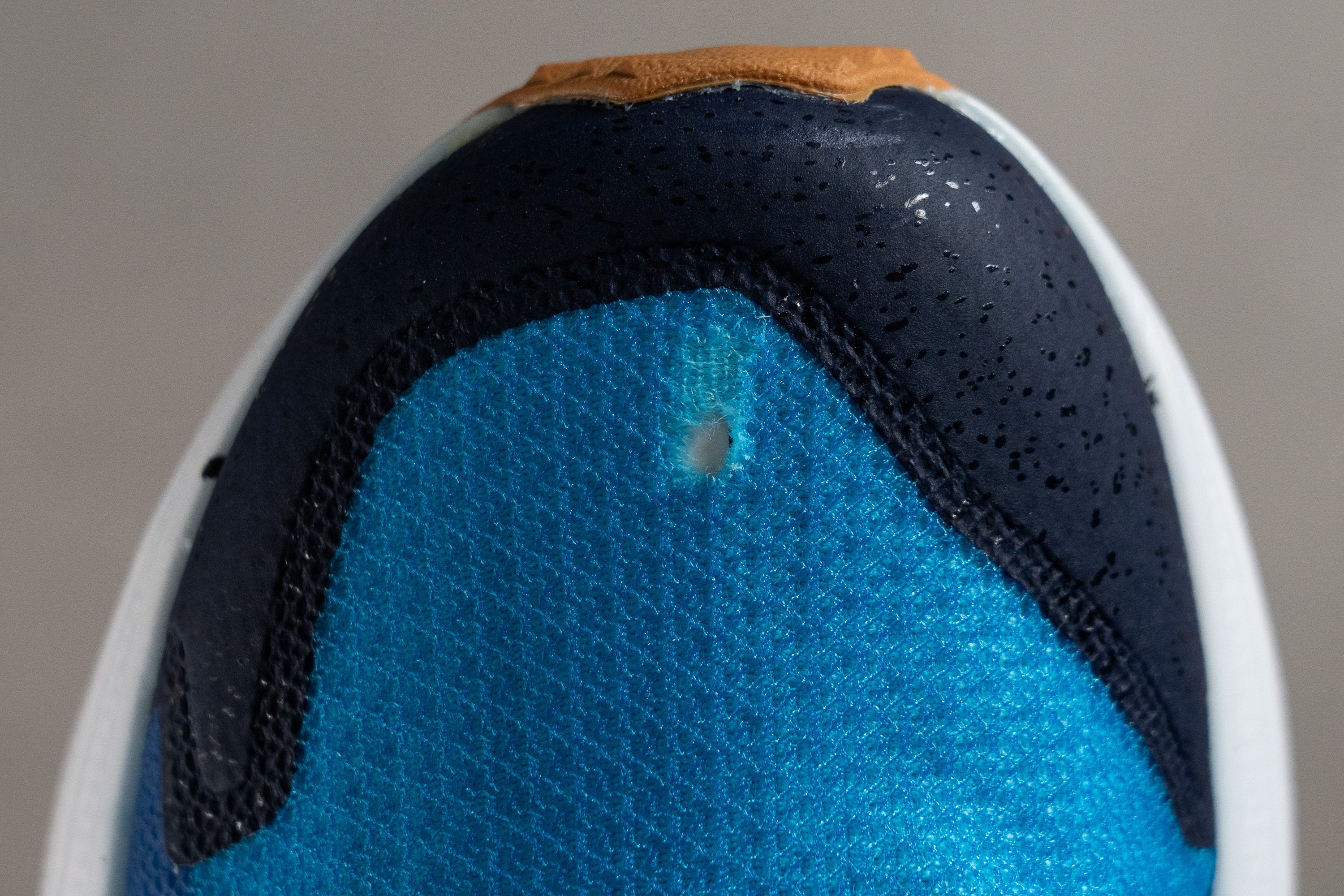
| Catamount 2 | 2 |
| Average | 3.1 |
Heel padding durability
After thoroughly assessing the toebox, we shifted our focus to the heel area, where we discovered a significantly more impressive result.
Brooks uses a remarkably resistant fabric in this area, effortlessly earning a strong 4/5 in our second Dremel test.
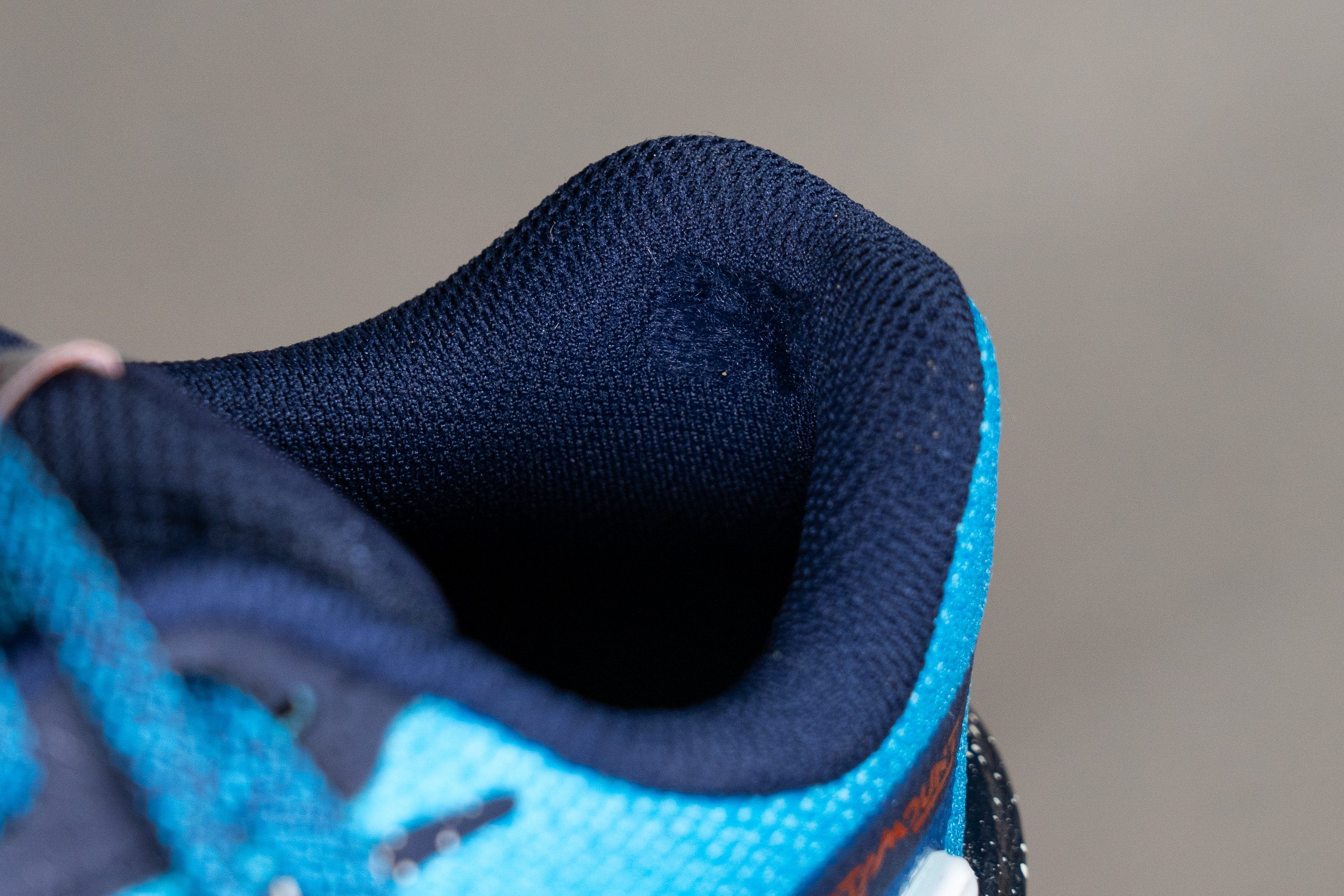
| Catamount 2 | 4 |
| Average | 2.9 |
Outsole hardness
Turning the shoe over to examine the outsole, we began by checking the hardness of the rubber with our durometer. At 84.5 in the Shore HC hardness scale, it's pretty much average.
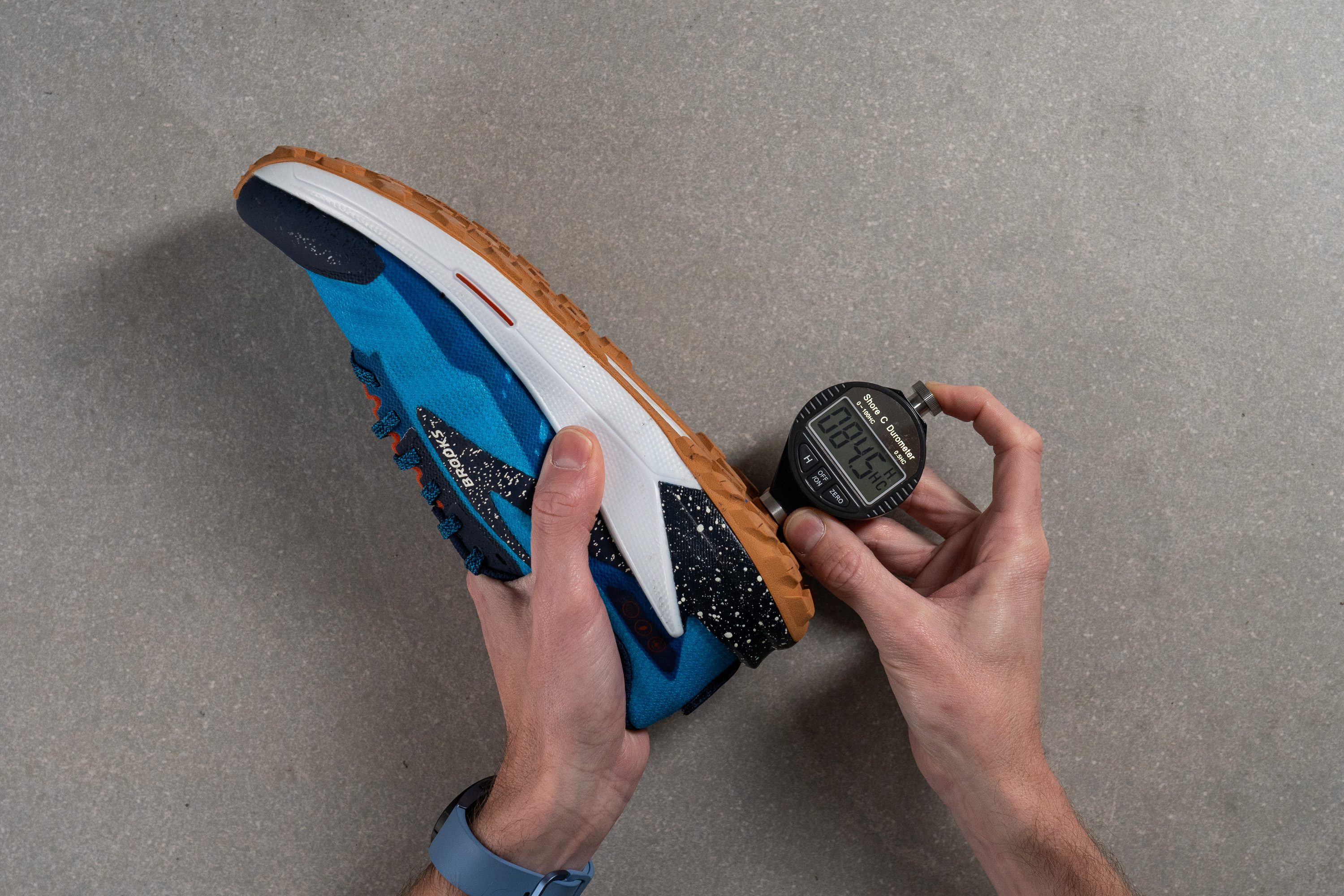
| Catamount 2 | 84.5 HC |
| Average | 85.8 HC |
Outsole durability
Now that we've established the outsole's average hardness, we believe the real test is the Dremel evaluation.
For the Catamount 2, our measurements showed an indentation of just 0.7 mm—a good result that promises a durable, long-lasting outsole.
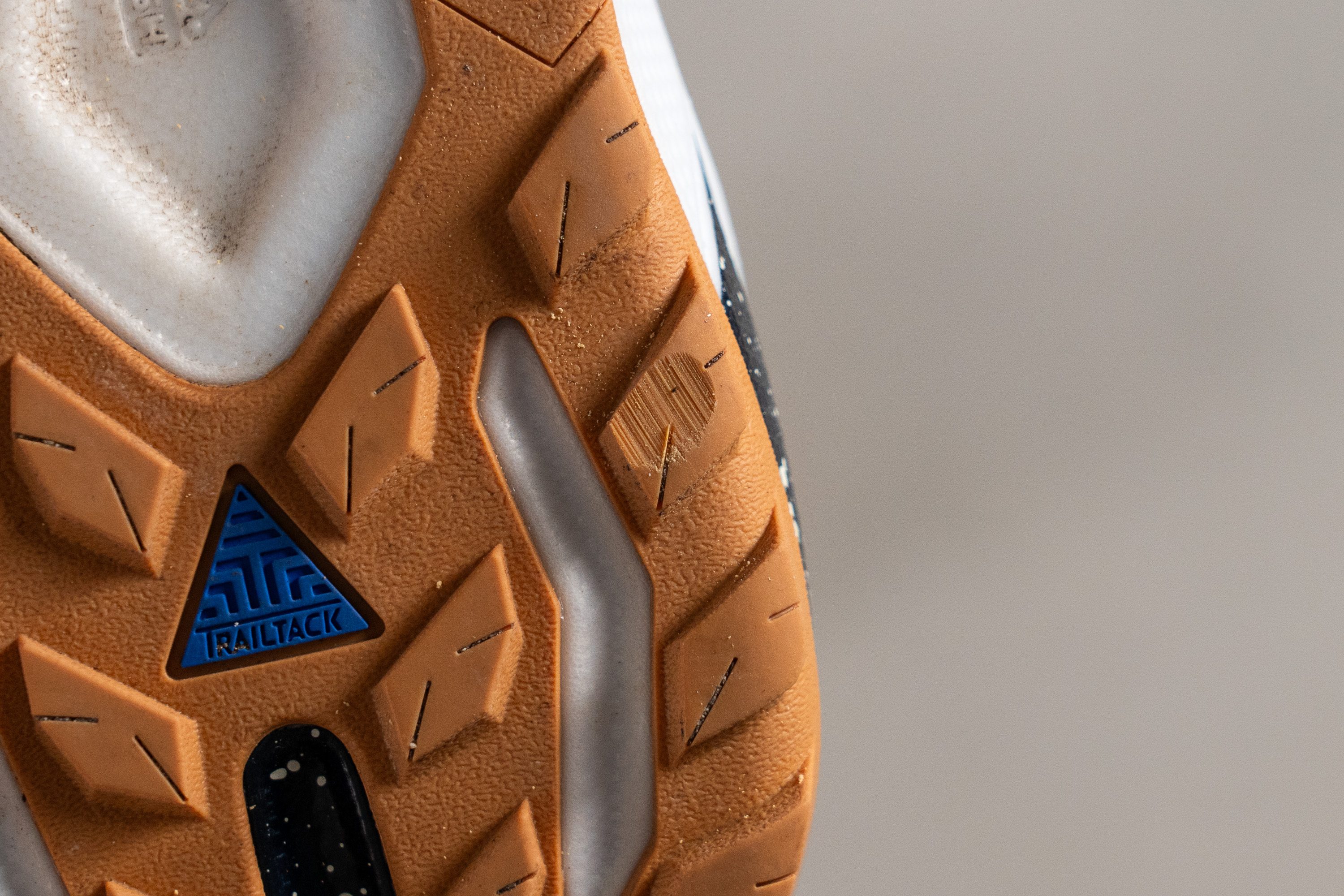
| Catamount 2 | 0.7 mm |
| Average | 0.9 mm |
Outsole thickness
Last but not least, we checked the thickness of the outsole.
At 2.5 mm, there's enough rubber, though we think it's slightly too much as it can somewhat mute the ride. For this shoe, with its impressive durability performance, we would have preferred an outsole thickness between 1.5 and 2 mm.
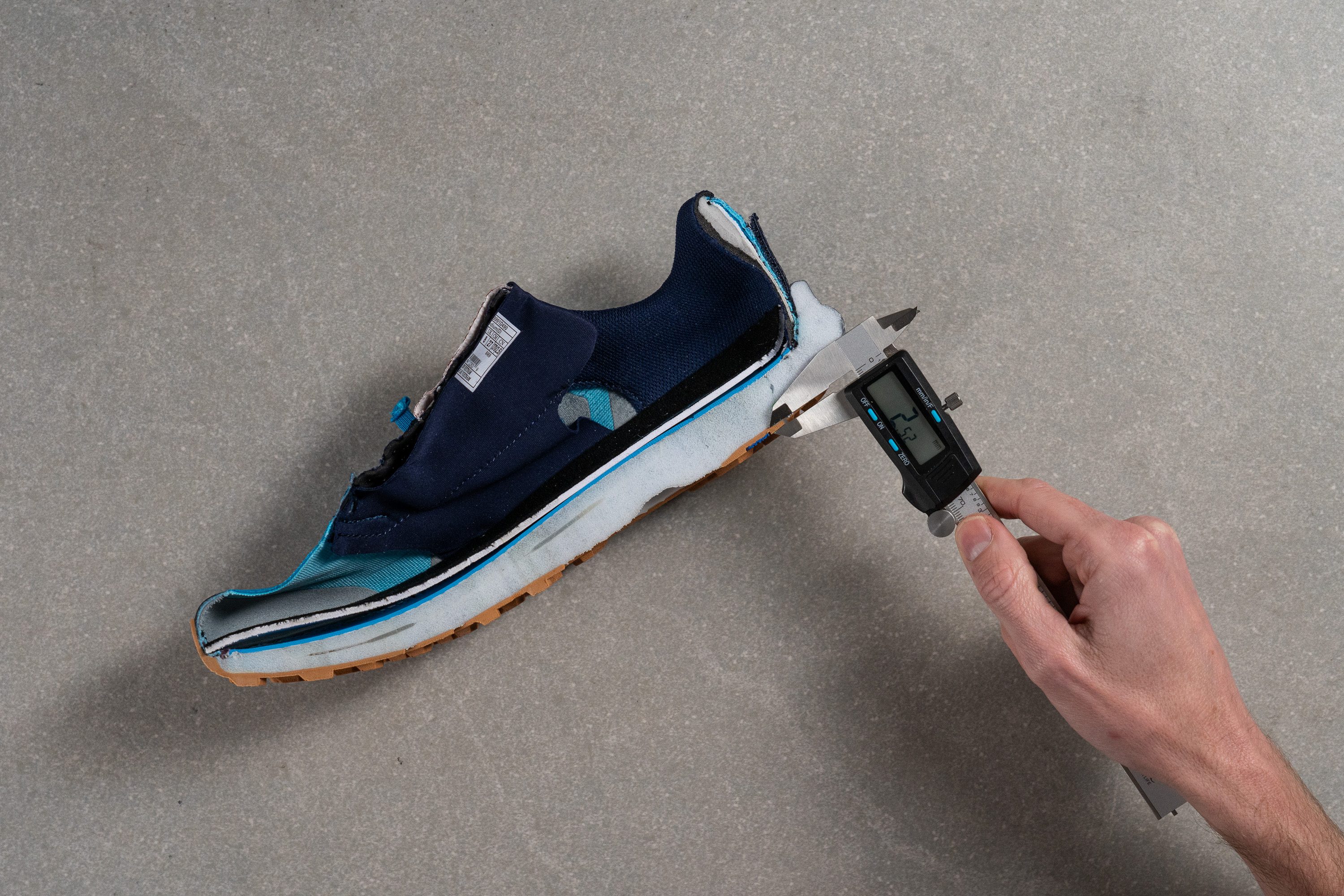
| Catamount 2 | 2.5 mm |
| Average | 2.3 mm |
Misc
Insole thickness
In an effort to keep the shoe as light as possible, Brooks opted for a really thin insole that's almost half the thickness of the average.
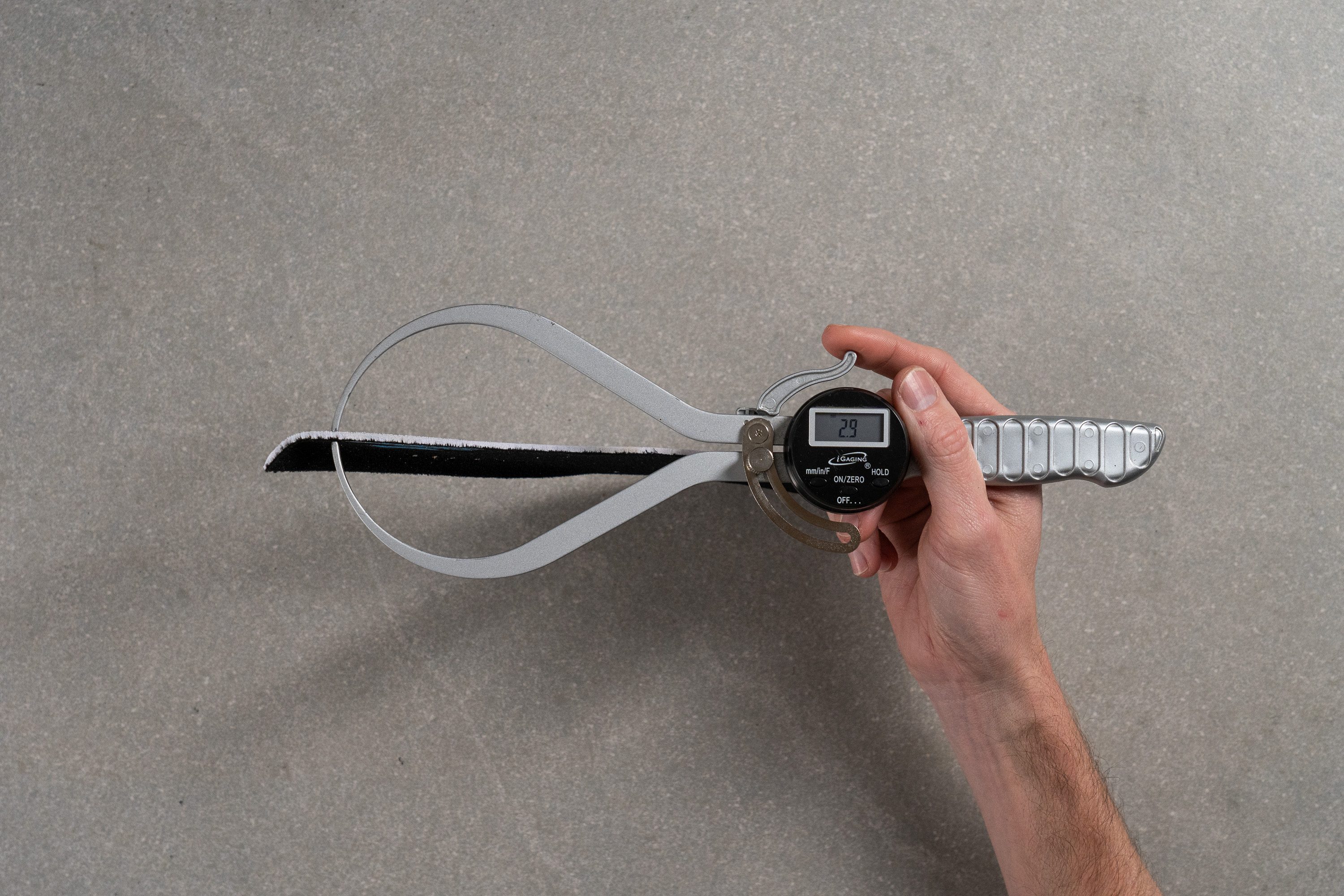
| Catamount 2 | 2.9 mm |
| Average | 4.7 mm |
Removable insole
We were also happy to see that the Catamount 2 it's one of the few shoes with a perforated insole, designed to improve ventilation underfoot. And it's removable, too.
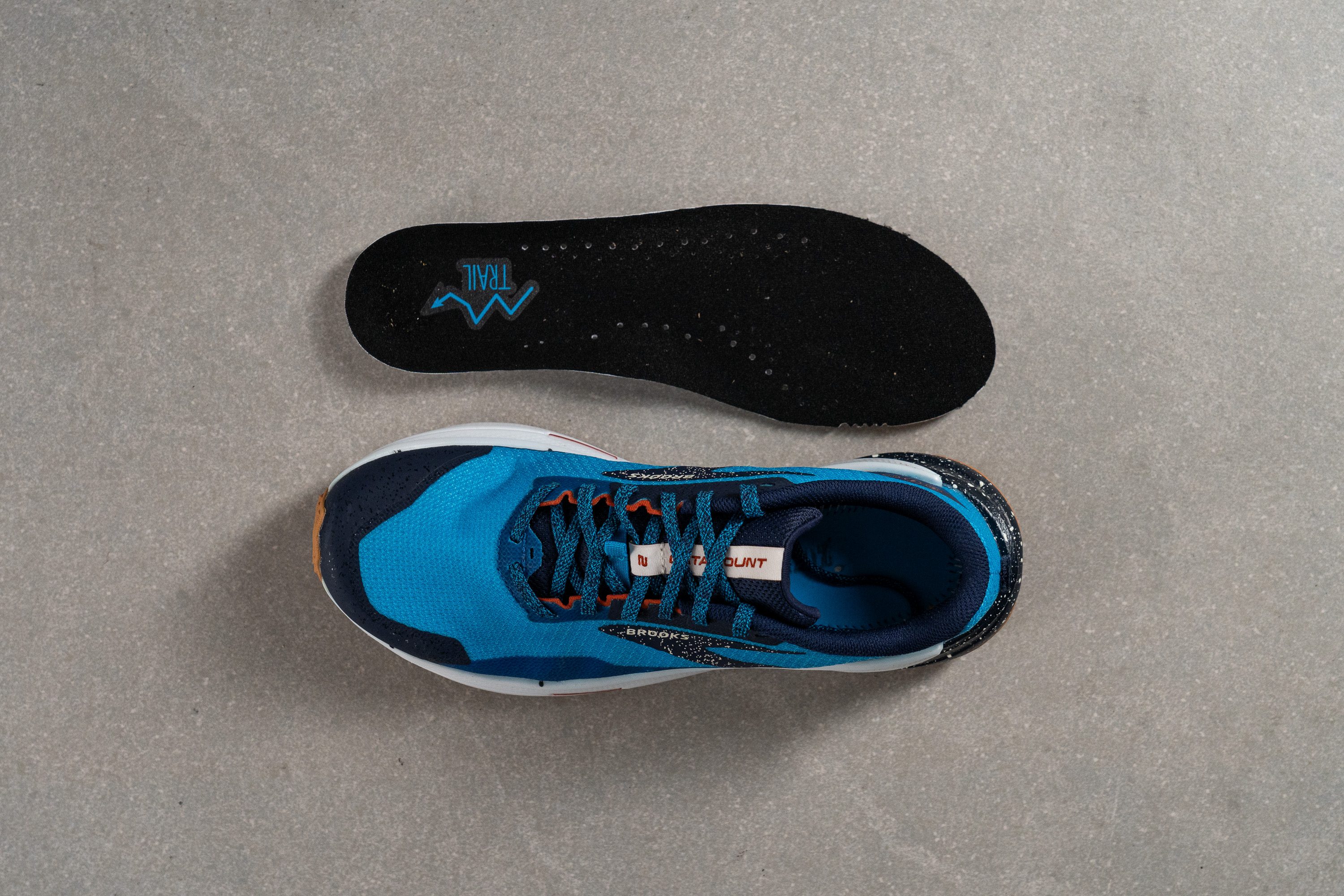
| Catamount 2 | Yes |
Midsole softness in cold
Since it's crafted as a shoe that can be used in winter, it's important to understand how it behaves under cold temperatures. What we found is that the softness varied to 25.9 HA.
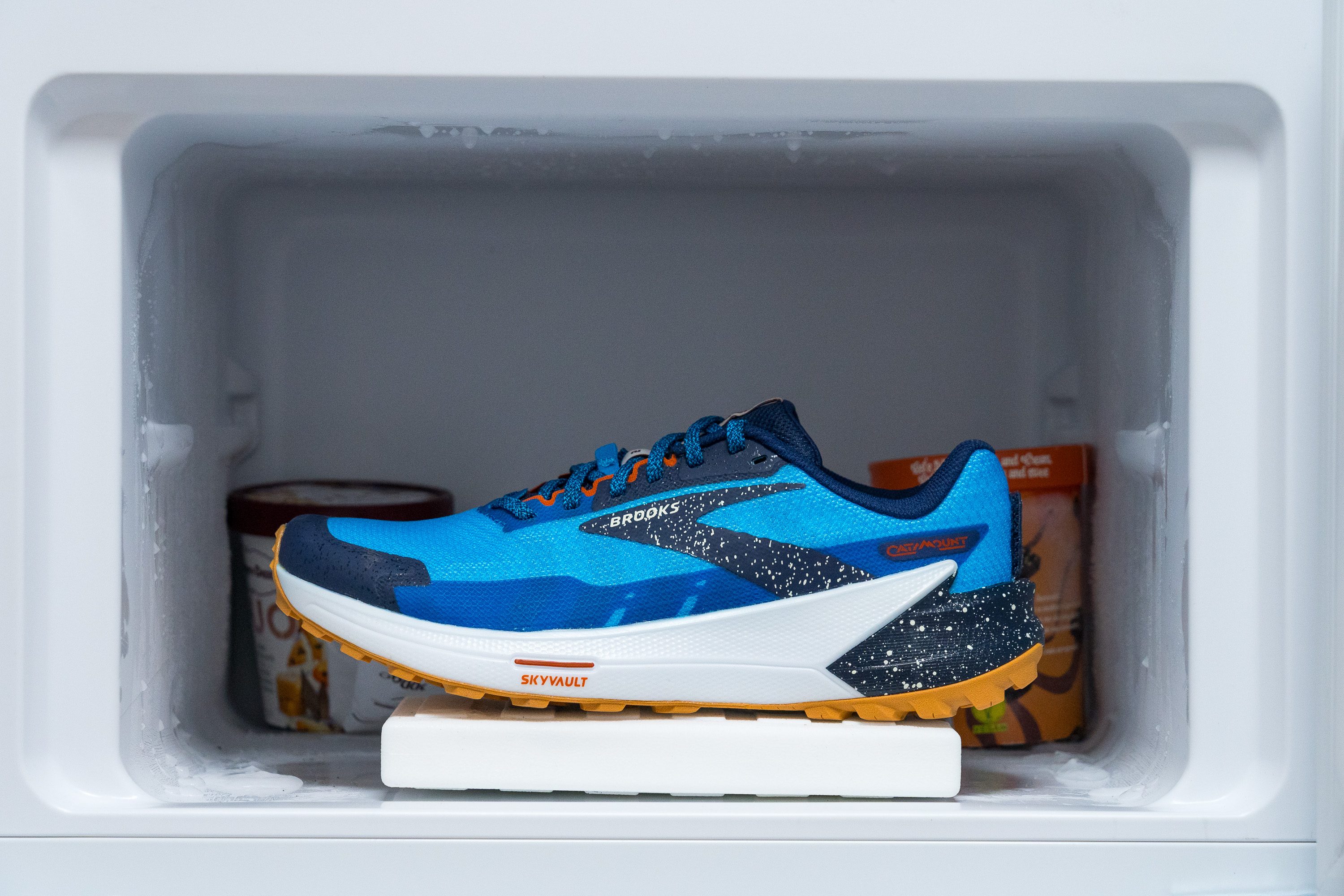
| Catamount 2 | 25.9 HA |
| Average | 27.8 HA |
Midsole softness in cold (%)
That's a 17.6% difference from the room temperature reading, which is a good result. It ensures that the foam won't feel significantly different across all seasons.
| Catamount 2 | 18% |
| Average | 26% |
Reflective elements
We found it disappointing that the Catamount 2 lacks any reflective elements—a significant oversight in terms of safety for a trail shoe.

| Catamount 2 | No |
Tongue padding
Brooks clearly focused on cutting as many ounces as possible, and the thin, 3.7-mm tongue is a testament to their efforts.
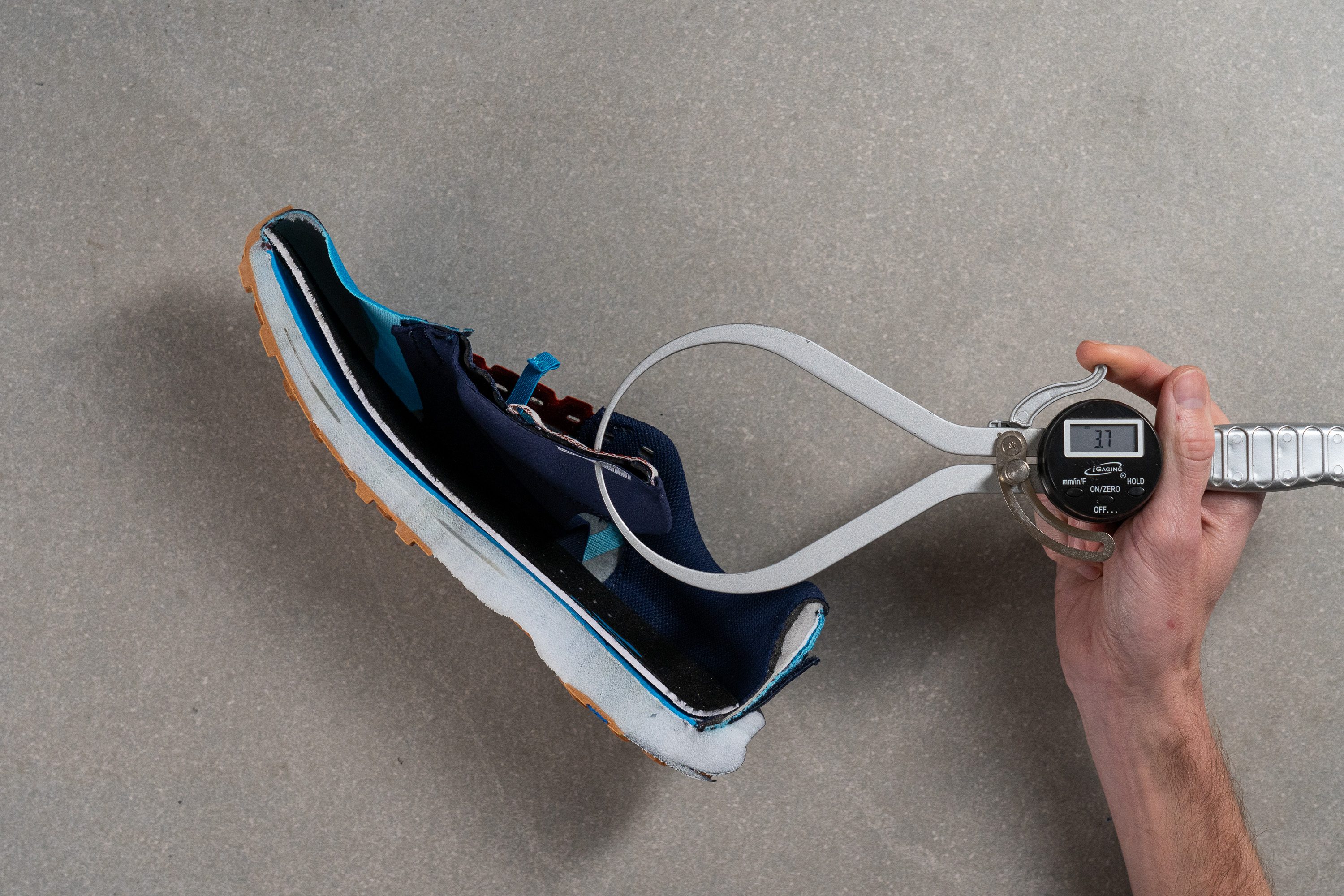
| Catamount 2 | 3.7 mm |
| Average | 6.4 mm |
Tongue: gusset type
The semi-gusseted tongue provides an excellent lockdown. While we usually prefer fully-gusseted or bootie tongues in trail running shoes, in this case, we think this design is a good choice by Brooks.

| Catamount 2 | Both sides (semi) |
Heel tab
The Catamount 2 may not have a heel tab, but it boasts a velcro-fastened tab to attach a gaiter, which is a delightful and useful addition!
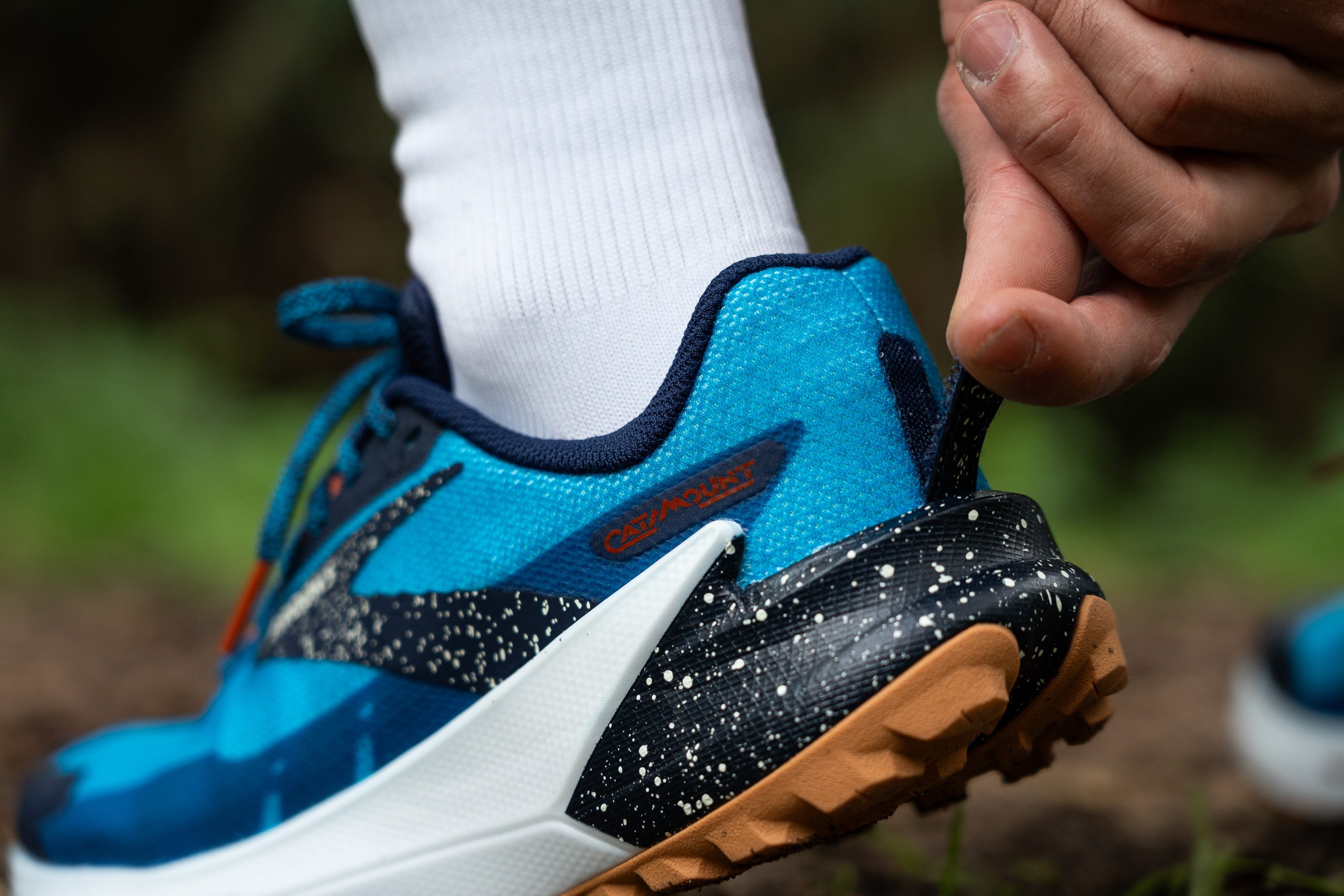
| Catamount 2 | None |

